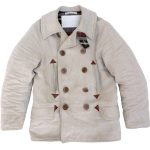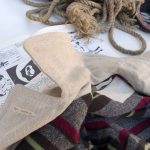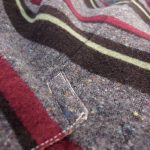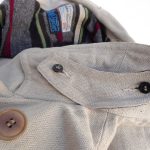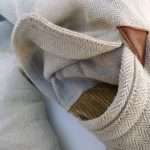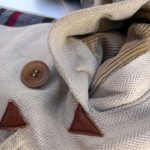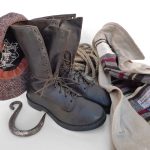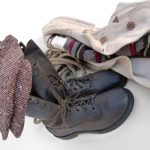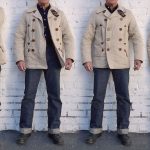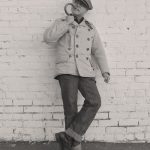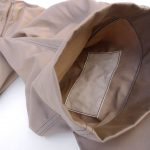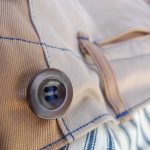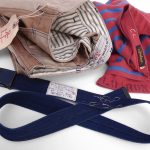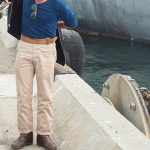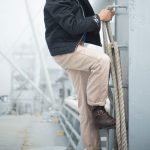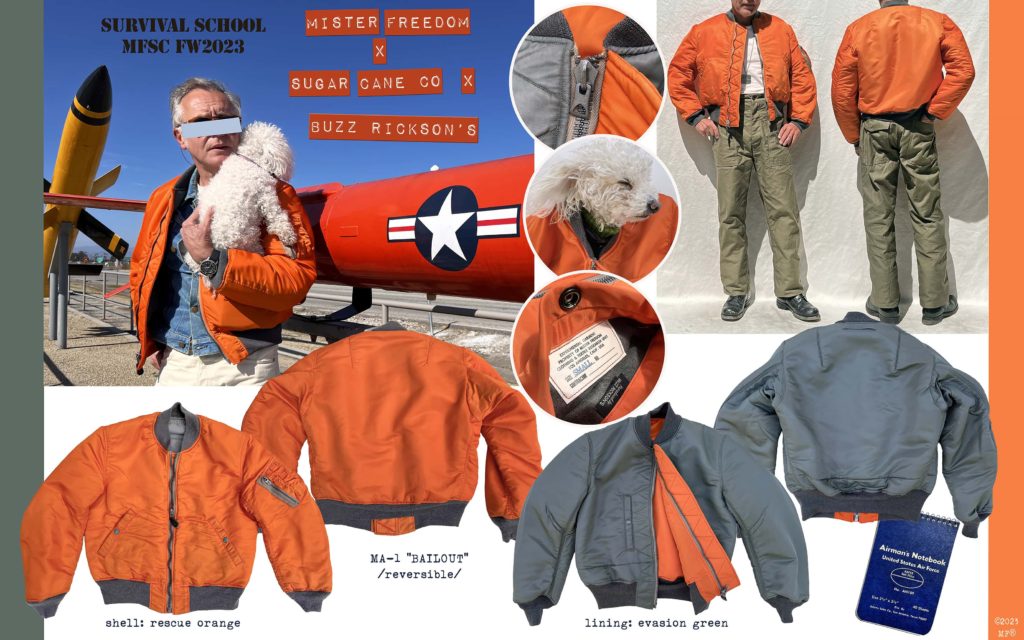
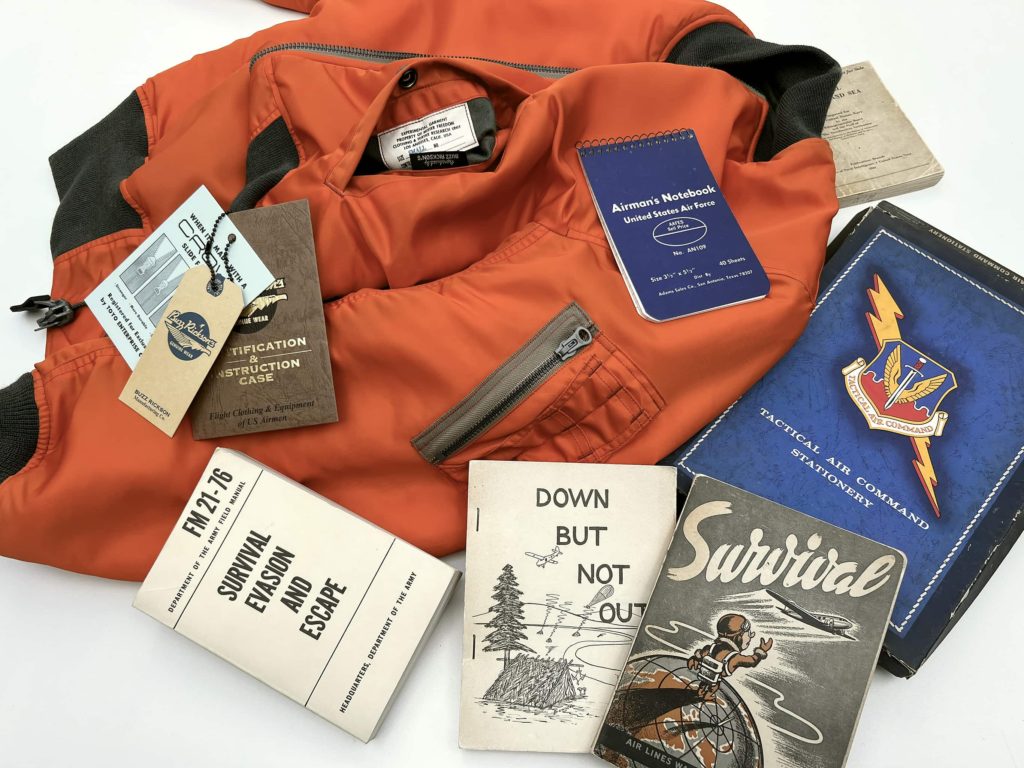

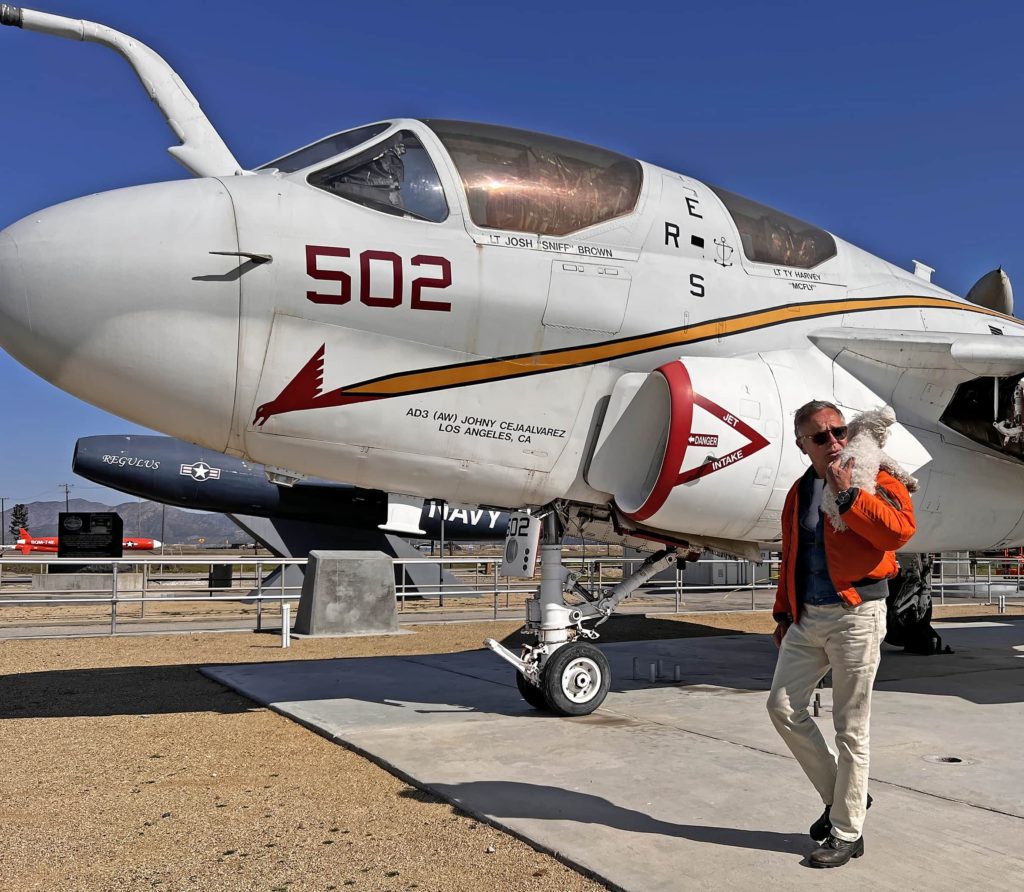
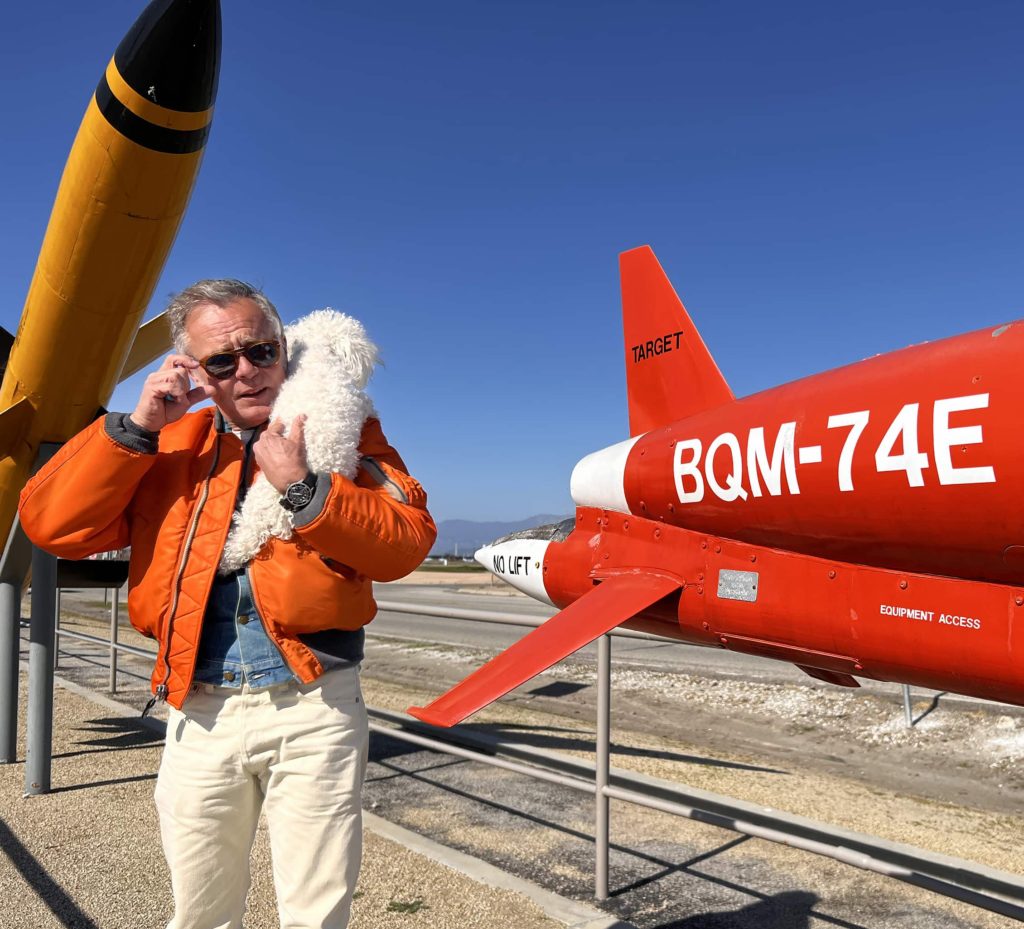
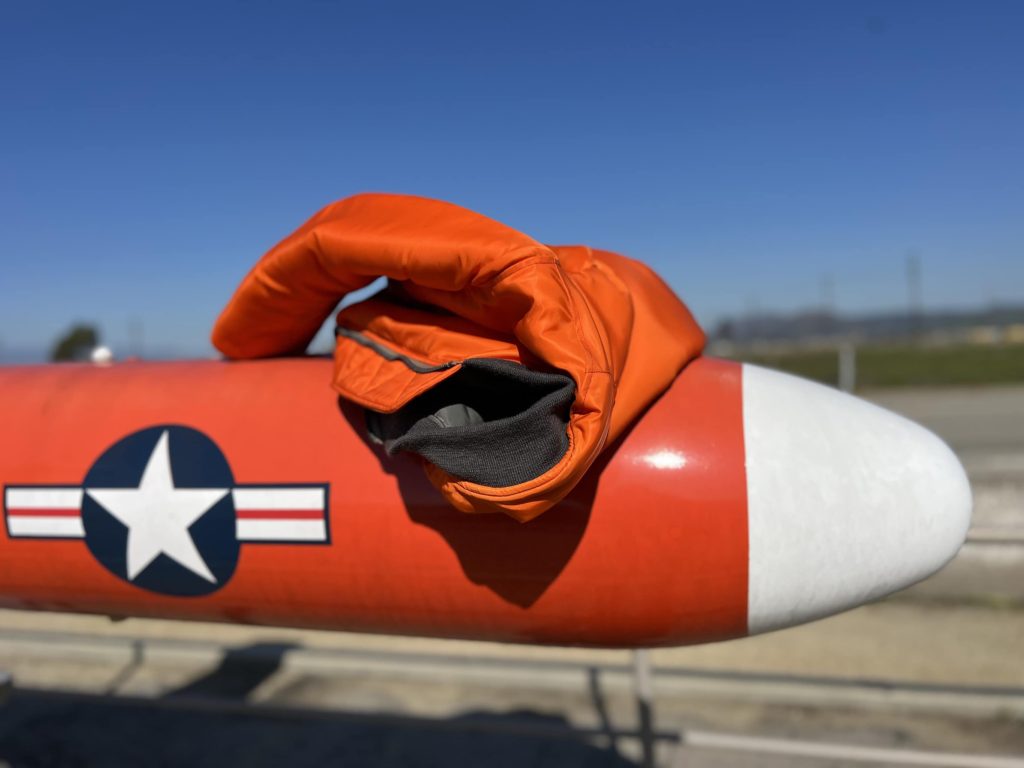
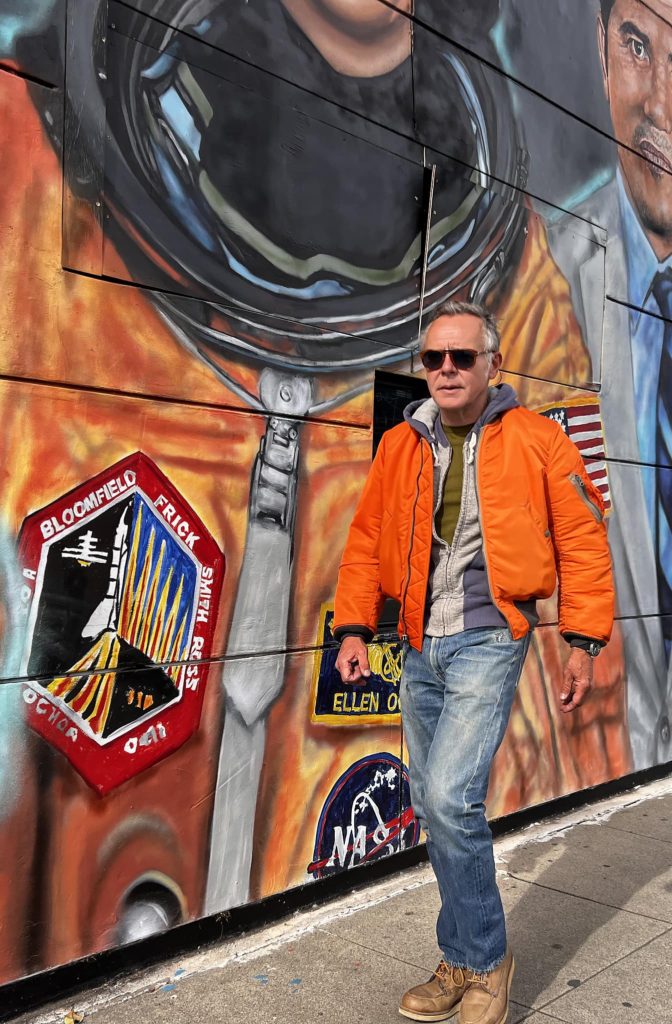
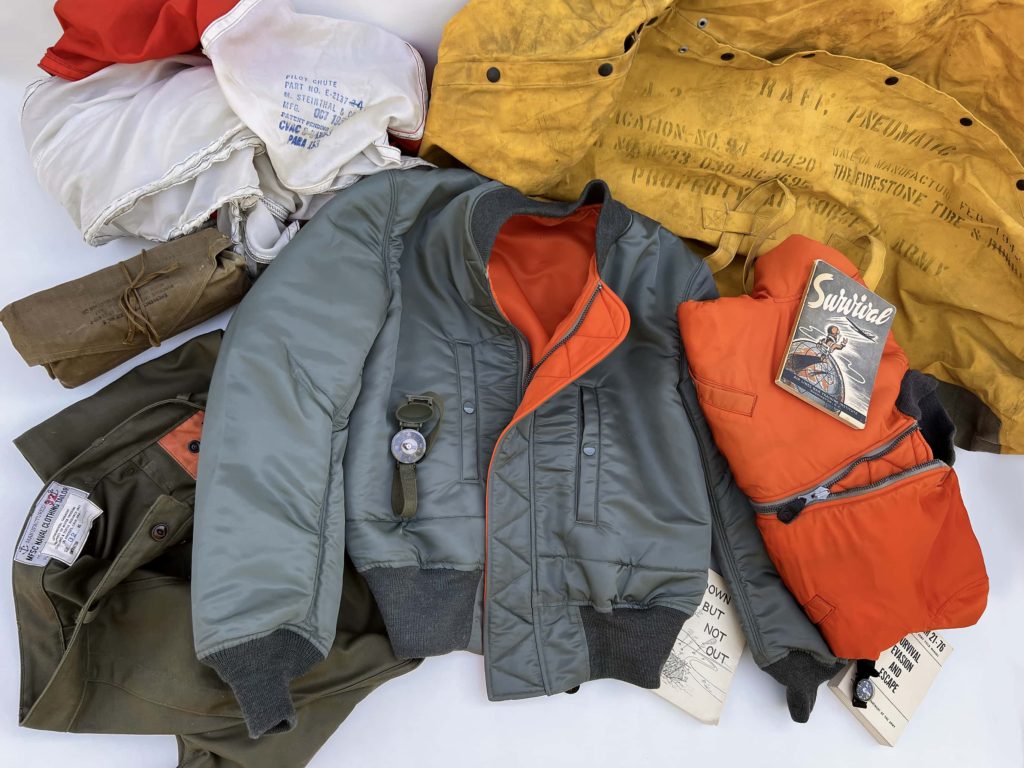
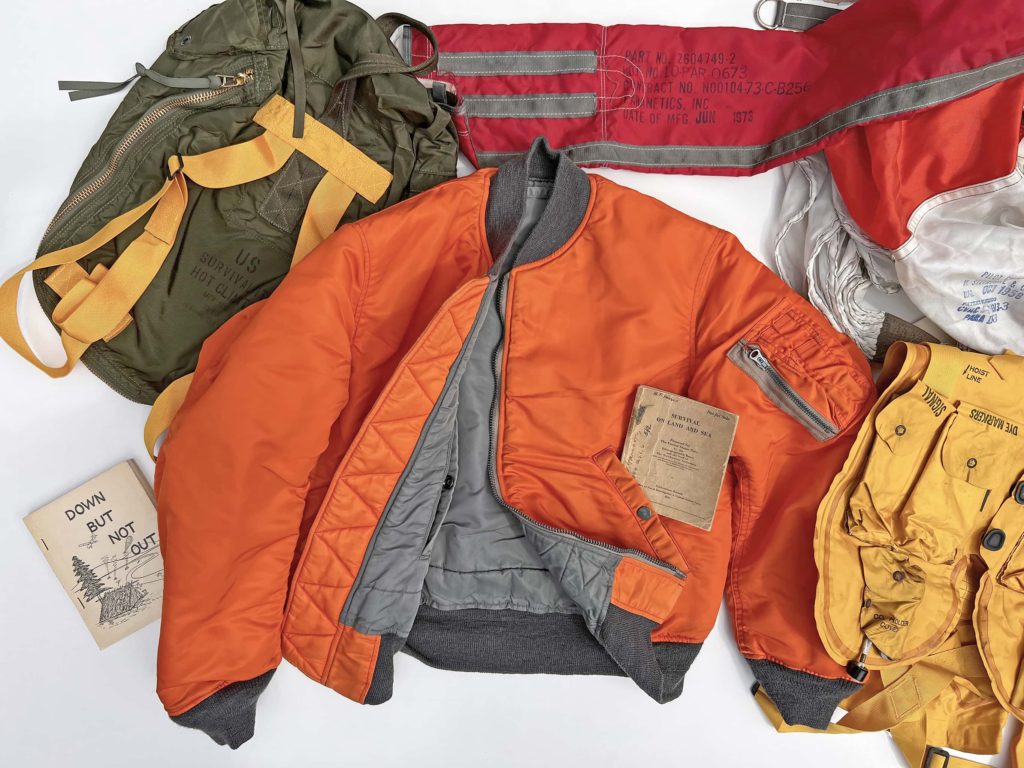
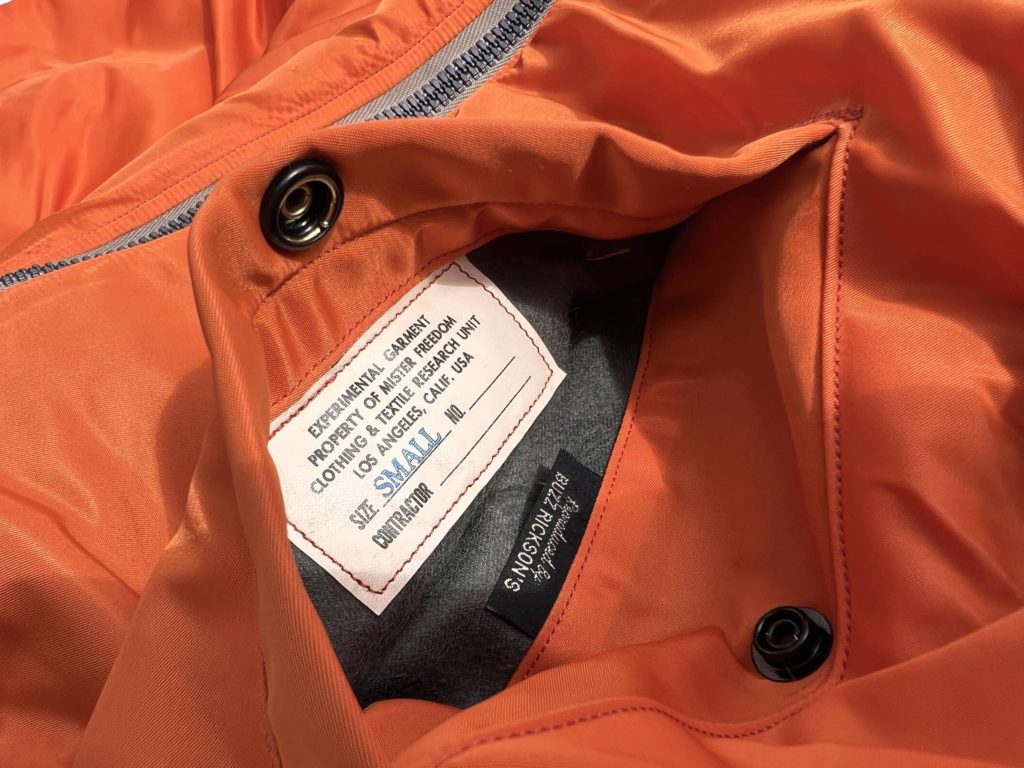
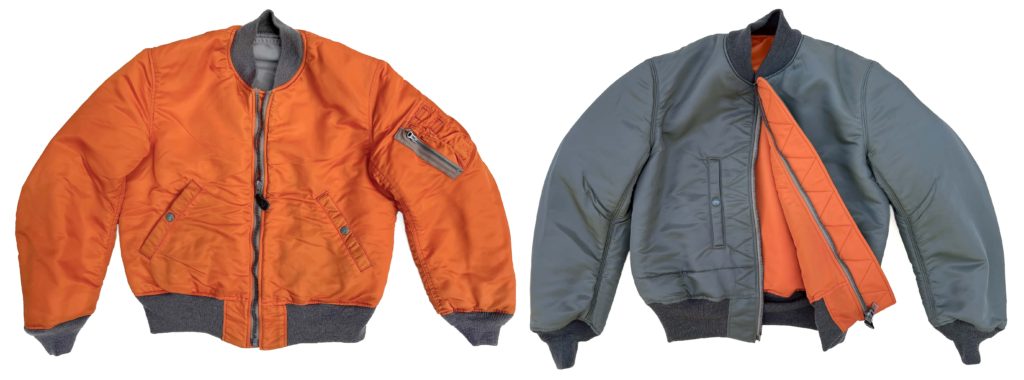
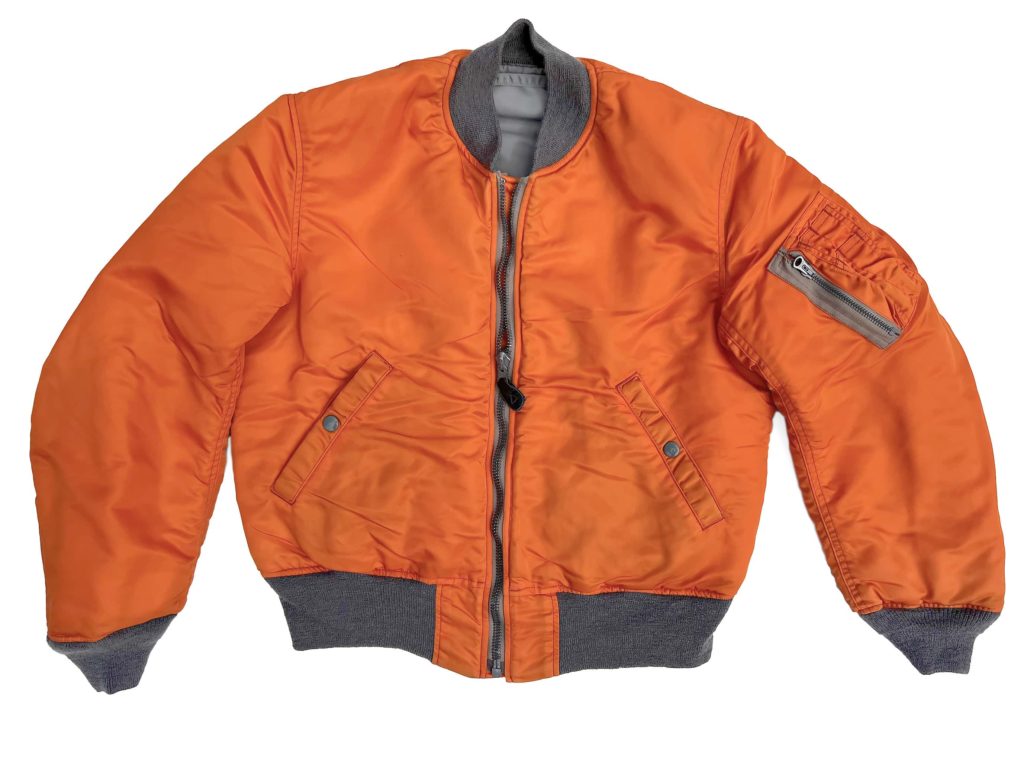
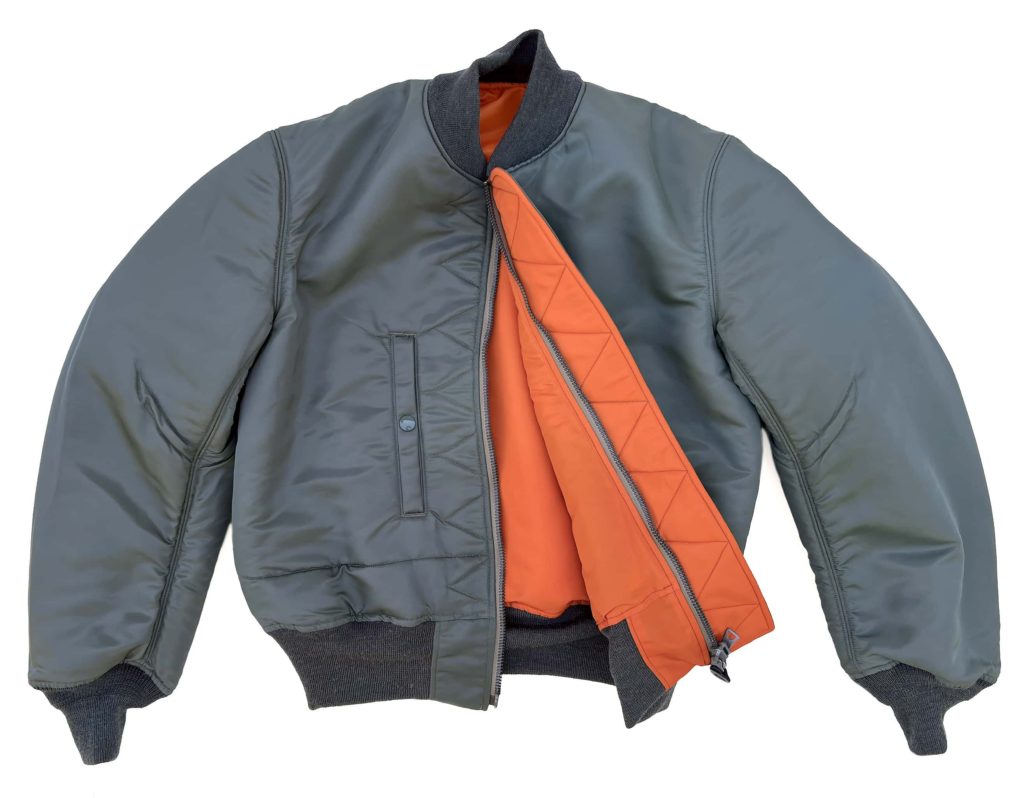
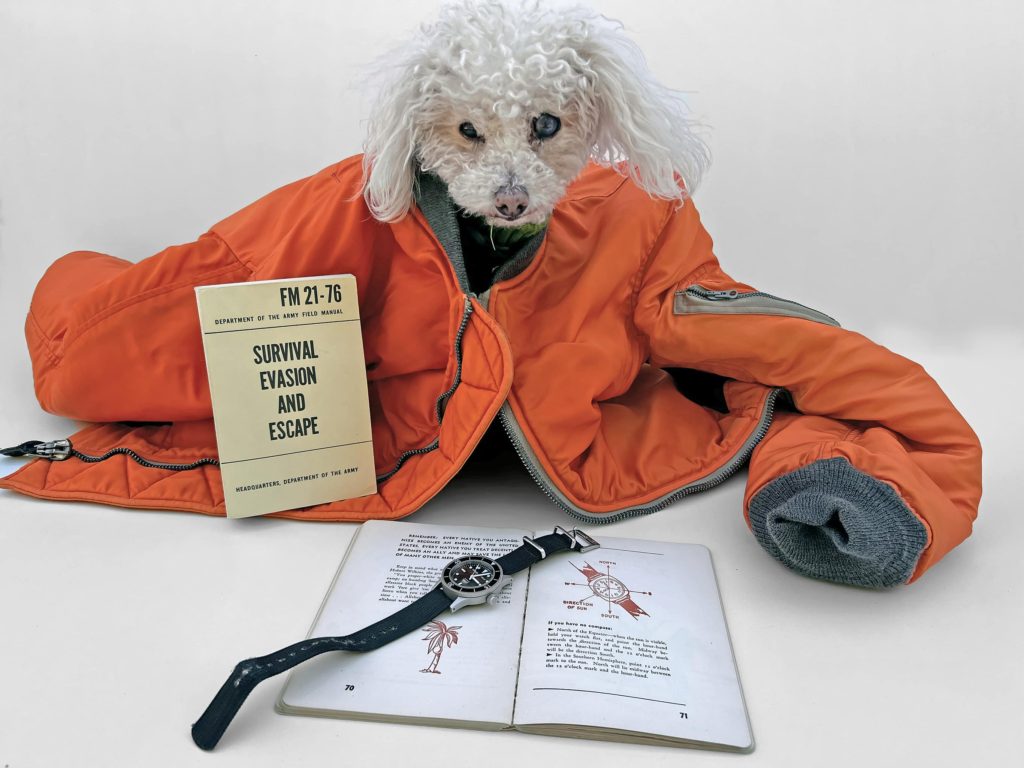

-
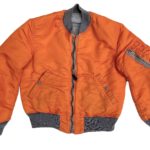
-
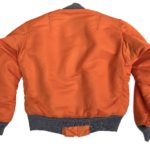
-
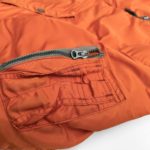
-
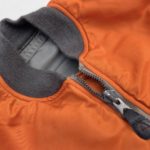
-
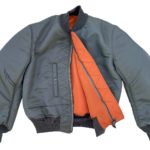
-
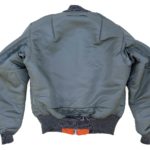
-
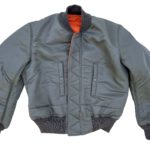
-

-
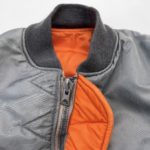
-
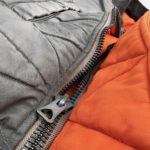
-

-
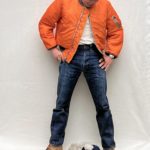
-
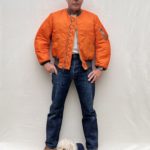
-

-

-

-

-

-
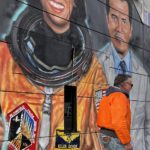
-

-

-

-
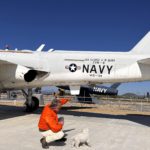
-
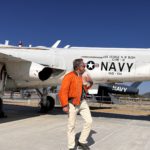
-
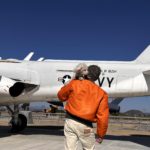
-
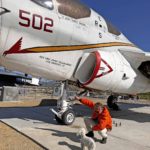
-
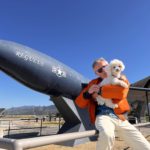
-

-
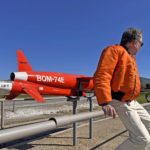
-

-
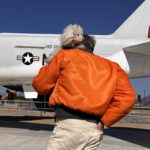
-

-

-
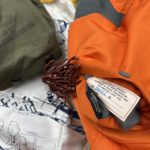
-
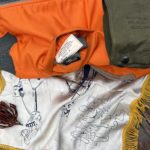
-
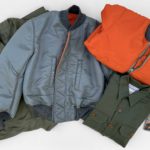
-
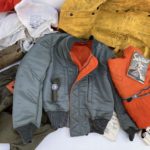
-
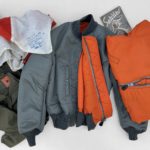
-
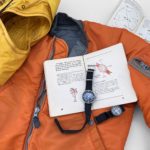
-
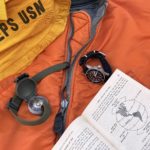
-
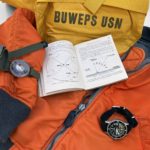
-
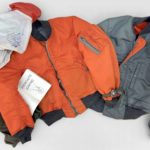
-
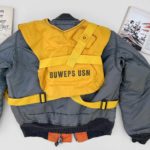
-
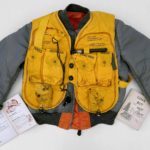
-
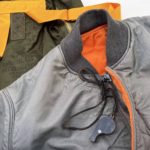
-
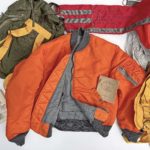
-
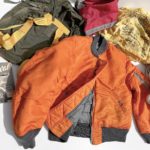
-
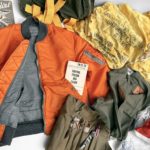
-
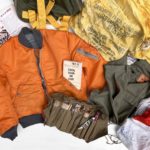
-
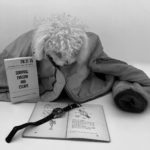
-
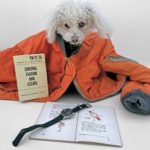
-
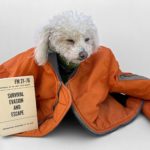
-

-

-
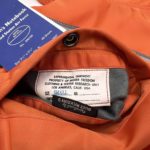
-
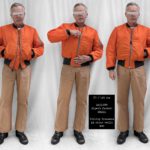
-
Bailout A-side SMALL fit
-
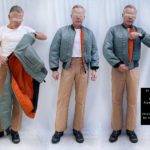
-
Bailout B-side SMALL fit
-
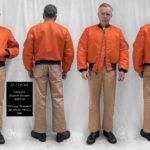
-
Bailout A-side MEDIUM fit
MF® MA-1 “BAILOUT” Flyer’s Jacket.
Mister Freedom® x Buzz Rickson’s 30th Anniversary Limited Edition.
mfsc FW2023 “Survival School” collection.
Made in Japan.
The MF® MA-1 “BAILOUT” Flyer’s Jacket drop officially launches our anticipated mfsc FW2023 “Survival School” capsule collection, an original line up freely-inspired by 40s~70s US military survival gear, vintage experimental MIL-SPECS garments, early NASA astronauts training program visuals etc.
Introduction to our FW2023 mfsc “Survival School” storyline:
In the early days of WW2, a downed pilot’s chances of being rescued and making it back to safety were very slim.
The USAAF (United States Army Air Force) soon realized that training a serviceman in the art of flying was not enough. Arial combat training was lengthy, qualifying candidates few, so a skilled flyer needed to survive after a bail-out.
A downed aviator’s field experience was invaluable knowledge, and sharing that experience with new pilot recruits was crucial.
The odds of returning to base camp started changing with the establishment of “Survival Schools”, and the implementation by the DoD of proper “Survival – Evasion – Escape” training for all flying personnel. (timeline for USAAF here)
Newly-designed experimental gear was also being issued and tested in combat situations and survival circumstances.
Starting in the mid-1940s, official films recreating fictitious survival scenarios (jungle, desert, mountains, arctic) were produced, and became required viewing during training and on base.
Swimming skills became a requirement for all aircrews. Survival crash courses through tough physical training and studies of illustrated manuals became mandatory for Army Air Force and USN flyers.
Training in basic survival skills, acquiring jungle and mountain terrain knowledge, exotic fauna and flora expertise, learning about wilderness adaptability, food foraging, land navigation techniques, cold and hot weather survival, local language and customs essentials, expertise in blending with the elements to avoid capture, evasion tactics, …, all lead to greater chances to make it home for American flyboys.
Techniques, technology, and TO (Theater of Operations) have obviously evolved through the years for US Armed Forces, and so have instructions in survival manuals. If what applied to the Korean cold front in the 50s had to be adapted to Vietnam’s steamy jungles in the 60s, the basics and message remained the same after “Survival School”: “you now have the skills to live another day”, Sir.
For more background on our R&D inspiration and design process, check out:
* Vintage USAAF and USN pilot survival gear.
* Visuals from 1950s-1970s US military survival program, from “Arctic Indoctrination Survival School” (aka “Cool School”) to “Tropical Survival School” (aka “Green Hell”), to “Survival, Evasion, Resistance and Escape” (SERE) training.
* Visuals from NASA astronauts on desert/jungle survival training (+ here) or geological field trips ( photos 1965, 1965, 1965, 1967, 1969…)
-
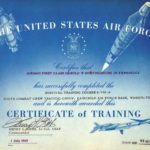
-
USAF Survival Certificate (1969)
-
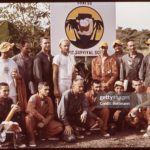
-
Astronauts USAF Trop Survival School 1964 (Getty)
-
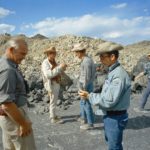
-
John Young Apollo 16 Geology Training (1971)
-
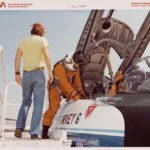
-
NASA Astronaut Training 1979 (Getty)
-
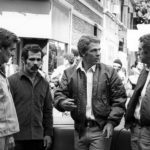
-
Loren Janes & McQ wearing MA-1 J-Type, behind the scene of “The Hunter” (1980)
On a side, personal note, if warfare survival skills are obviously irrelevant to a pampered civilian life, and the odds of one experiencing Louis Zamperini’s plight unlikely for most, basic knowledge of adaptability and improvisation, resourcefulness, awareness of one’s surroundings at all time, applying the right amount of common sense and civility in all situations, should be attitudes taught in schools, and at home.
Yes, learning how to fend off a wild cat attack while on a hike, or knowing which side of a tree is most likely to grow moss in the northern hemisphere may sound like useless knowledge for most city dwellers stuck in traffic.
But, without turning into a paranoid survivalist nut job, merely paying attention in daily life will never be a bad habit to have! “Improvise, adapt, overcome” is not a bad motto either.
Along those lines, knowing to keep one’s eyes on the road and not the Pokemon while driving or crossing the street may prevent many Darwin Awards from being distributed worldwide. Right now, in the US alone, 2 auto crashes occurred in the 10 seconds it took you to read this paragraph.
Oh, and don’t act like a prey if you cross path with a big cat, even “The Zamp” couldn’t outrun a mountain lion. Also, moss usually grows on trees on the side facing North, if you lost your way, forgot your compas, and just realized you killed your battery on TikTok…
Kids these days know more about sneaker brands than varieties of edible wild fruits. Not sure this is a good survival skill for our species.
The jacket:
The Mister Freedom® BAILOUT Flyer’s Jacket is our spin on the classic MA-1 flight jacket – aka “bomber jacket” – the iconic piece of protective gear officially issued to USAF (United States Air Force) fighter jet pilots and flight crews throughout the 1950s~60s.
The design of the MA-1 flight jacket evolved through the years, with its inception around 1950 when the bulky mouton collar of its predecessor (the B-15 flight jacket, 1944~1954) was replaced by a soft wool knit ribbed band to better accommodate combat pilots modern flight helmets (out were the WW2 cloth skull caps, in were the hard shell “bone dome” types) and reconfigured jet aircrafts cockpits (the Jet Age mostly kicked propeller planes to oblivion for aerial warfare.)
Optimized for current technology, the MA-1 (MIL-J8279) was born, becoming official issue sometime in 1952. Followed many revisions, until the MA-1 was phased out by updated regulations and eventually retired in the late 1980s, outperformed by safer fire-resistant Nomex® MA-2 flight jackets. This wasn’t the MA-1’s last words however…
For our “Survival School” story, we decided to modify a vintage “JACKET, FLYING, MAN’S, INTERMEDIATE, MA-1, MIL-J-8279D” specimen from an Alpha Industries 1965 contract, and turn it into a “might have been” functional, wearable, “experimental” garment.
The major mod on the D-Type (fifth generation MA-1, circa 1960) had been its novelty reversible revamping, with a sage green (referred to as camo) nylon shell for classic military concealment on the ground, contrasting with an “Indian orange” high visibility lining. A downed pilot was instructed to wear the green side to evade enemy capture after a successful bailout, and wait for a rescue team flashing the orange side out.
Decades later, this major visual functional improvement probably helped to propel the MA-1 style to the unsustainable fashion sphere, from streetwear to catwalks, produced in all kinds of CoO (Country of Origin) for a wide range of international labels.
For our BAILOUT design mission, the main point of a plausible “revision” was to flip the blazing orange lining side as the main side, up the nylon twill ouncage, use the 2/2 nylon camo side as the lining, while keeping all period-correct Mil-Specs for fabrics and trims.
-
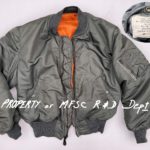
-
Vintage USAF MA-1 (Mil-J-8279D), 1965 Alpha Industry
-
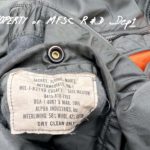
-
Vintage USAF MA-1 (Mil-J-8279D), 1965 Alpha Industry
-
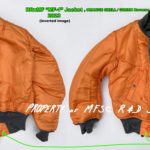
-
MF® x Buzz rickson’s MA-1 “Bailout” Flyer’s Jacket
R&D process ©2023
-
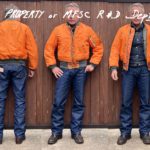
-
MF® x Buzz rickson’s MA-1 “Bailout” Flyer’s Jacket
R&D process ©2023
-
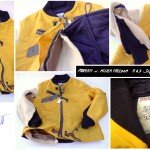
-
MF® HELO Jacket interlining construction ©2014
-
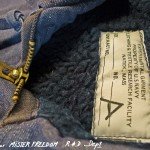
-
Vintage USN Natick Deck Jacket
-
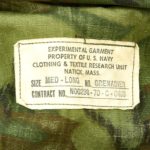
-
Natick label on a vintage 1970 Float Coat
Collaborating with Buzz Rickson’s – celebrating at the same time their 30th Anniversary! – made this a breeze for us, thanks to the help, expertise and patience of Buzz’s creative director Kameya San and team. After providing detailed instructions/diagrams of our MA-1 BAILOUT concept, we gladly assumed the backseater role in the cockpit and let the world’s ichiban manufacturer of authentic military flight jacket replicas do all the heavy lifting.
Of course, Buzz delivered! No cut corners, outstanding craftsmanship and quality, living up to Toyo’s high manufacturing standards and BR’s impeccable reputation.
“But, why not just wear a vintage D-Type with the orange side out?” one could legitimately wonder…
Well, because of the overall construction, quilted storm flap set-up, slash pockets configuration (“hand warmer” for the A-side and “map storage” for the B-side), utility (“cigarette/pen”) sleeve pocket on A-side, etc…, sporting a vintage MA-1 orange side out will always look like the garment is being worn inside out. Not a life-threatening issue of course, but, for those attached to details – and we are -, wearing out what is clearly a jacket’s lining in non-survival circumstances may look a bit awkward or contrived around town.
The BAILOUT fills that gap for one wanting to casually wear a bright orange military-style flight jacket, built like a legit 1960s MA-1.
Note that the MF® BAILOUT is still fully reversible, and can of course be worn B-side (green) out.
On original D-Types, the orange nylon twill lining is of a lighter/thinner grade than the Mil-Specs green 2/2 twill shell. The MF® BAILOUT jacket features vintage Mil-Specs heavy 2×2 grade nylon twill on both A (orange) and B (green) sides.
For the accuracy-obsessed, quote from Buzz Rickson’s MA-1 shell fabric specs:
“36 filament yarns are twisted together to make a single thread that is then woven into the 2/2 twill fabric.
2/2 means two warp threads crossing every two weft threads, identified by diagonal lines.”
Regarding warmth, “INTERMEDIATE” in the original MA-1 nomenclature refers to the “Intermediate Zone” climate for which the garment was initially optimized, a range of 14º F ~ 50º F in a military classification of 5 climate zones at the time.
The MA-1 was also considered as a versatile year-round piece of gear in temperate climates by flight crews, worn zipped-up in Winter and un-zipped in Spring.
We decided to keep the period-correct Wool/Cotton blend (60/40) fiber interlining of the 1960s originals, and not the cheaper and lighter polyester fiber modern days substitution. This makes the BAILOUT much heftier and bulkier than contemporary fashion MA-1 type jackets out there.
For the zipper, we went with a robust vintage-style aluminum model of Coats & Clark (CC) slide fastener, instead of the expected black oxidized brass CONMAR zipper of period D-Type MA-1 jackets. CROWN was a division of Coats & Clark. Production of most CROWN fasteners (like the aluminum spring automatic lock etc) was abandoned sometime in the 1960s, deemed too complicated and too costly.
Some 30 years ago, Toyo Enterprise went through great lengths (and, I was told, hundreds of thousands of dollars in R&D and retro engineering) to faithfully reproduce several CROWN fastener models, and now owns the Trademark. These cost today about $30~$40 to produce… Kameya San was kind enough to hook us up with a few CC models for this limited edition.
We also opted to stay true to the original MA-1 jackets fit and profile, with the old school full and boxy cut, setting them apart from modernized slimmed-down versions with trimmed sleeves flooding the fashion market since the 1980s.
The BAILOUT’s classic shorter length compliments one’s natural waist, and works best with mid to high rise trousers or jeans.
This season, the recurring mfsc cloth label for our “Survival School” collection is a respectful nod to the little-known Quartermaster Research Facility (aka Natick Army Labs), a US Department of Defense organization located in Natick, Massachusetts. The “CLOTHING & TEXTILE RESEARCH UNIT” has been tasked with designing and developing anything from new uniforms/gear/fabrics/camo patterns/etc for the US military since 1952. Those guys are the real OG designers of most streetwear today.
The Mister Freedom® BAILOUT “Clothing & Textile Research Unit” labeling is concealed in the left side slash pocket.
Of course, the Mister Freedom® BAILOUT comes “unissued”, i.e. free of unearned squadron/unit patches. Should you want to go full-on Top Gun, do your thing Mav’!
Speaking of Hollywood, our subtle nod to “The Hunter” (1980) – McQueen’s final movie – with his bounty-hunter “Papa Thorson” character (pops going full circle after Josh Randall, ain’t he?!) sporting an MA-1 iteration won’t be lost on the cinephile. Papa and stunt double/friend Loren Janes are wearing the flap pocket model MIL-J8279E (E-Type) in the movie, although they may be commercial versions?
Anecdotally, “Buzz Rickson” is the name of McQueen’s character name in “The War Lover” (1962.)
The MF® x Buzz Rickson’s “BAILOUT” Flyer’s Jacket is a classic reimagined in California, USA by Mister Freedom®, designed for the man-o-style uninterested in fleeing trends, and crafted in Japan by Toyo Enterprise.
SPECS:
PATTERN:
A classic 1960s US military flight jacket pattern (MA-1) revisited, and a visual nod to colorful Jet Age astronaut jackets.
FABRIC:
A-side: Rescue out, period Mil-Specs 2/2 heavy nylon twill, “Indian” orange.
B-side: Camo out, period Mil-Specs 2/2 heavy nylon twill, 1960s USAF sage green.
Interlining: thick insulating blend of undyed 60% Wool – 40% Cotton pile fibers.
DETAILS:
* Constructed and redesigned with all period Mil-Specs patterns/fabrics/trims/snaps/zippers.
* Vintage silhouette and proportions true to authentic vintage USAF MA-1 profiles: full cut, boxy fit.
* Fully reversible: main side (A-side) is rescue (Indian orange), lining (B-side) is camo (sage green.)
* Two slanted “hand warmer” slash pockets on shell, snap closure, 35/65 Wool/Rayon blend double face brushed pocket lining.
* Two interior “map” welt pockets, snap closure, white cotton twill pocket lining.
* Quilted storm flap.
* Soft 100% wool ribbed knit collar, waistband and sleeve cuffs.
* Utility pocket (“cigarette” pocket) on A-side sleeve, authentic pen caps slots.
* Aluminum “CC” (Coats & Clark) CROWN type double-sided slide fastener (zipper), all cotton tape, leather pull tab extension for easier gloved operation.
* Intricate garment construction, authentic puckering seams, cut and sewn by skilled and experienced artisans.
* Year-round jacket, optimized for 14º F ~ 50º F (minus 10º C ~ 10º C) range temps.
* Original Mister Freedom® x Buzz Rickson’s “Clothing & Textile Research Unit” labeling, concealed in the left side slash pocket.
* Crafted in Japan by specialized expert artisans, with a 30-year experience in authentically-reproducing vintage military gear.
SIZING/FIT:
The MF® x Buzz Rickson’s “BAILOUT” Flyer’s Jacket comes ready to wear out of the box. No initial process required.
MF® crew sizing recs:
CL (5’7 ~ 140 lbs): I opted for a SMALL, for a comfortable yet period fit.
John (6’ ~ 170 lbs): LARGE
Ivan (5’9 ~ 160 lbs): MEDIUM
Enoch (6’ ~ 153 lbs): SMALL
The MF® BAILOUT pretty much fits like authentic 1960s vintage MA-1 jackets, for those familiar with them.
Some people may consider sizing down, according to silhouette and subjective style preferences.
Please refer to size chart for approximate measurements, keeping in mind that due to the thickness of the shell + interlining + lining, properly measuring is somewhat subject to one’s interpretation.
CARE:
Professional DRY CLEAN only or spot clean when needed.
Do NOT machine wash/heat dry.
Because of the 100% wool knit trims and , please store garment with your choice of moth-repellent product.
Available from www.misterfreedom.com, our Los Angeles brick & mortar store, and fine retailers around the World.
Email sales@misterfreedom.com or call 323-653-2014 with any questions unanswered above.
Thank you for your support.
Christophe Loiron
Mister Freedom®
©2023
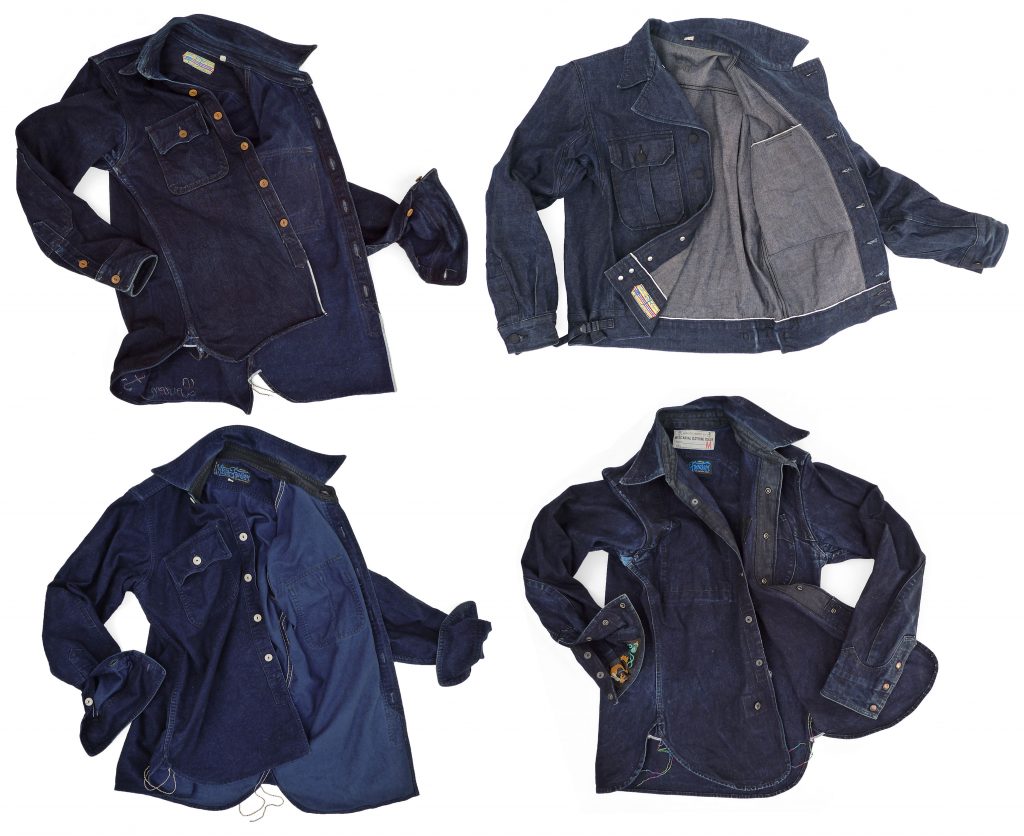
Mister Freedom® Mess of Blues.
Because we don’t offer factory-distressed garments, for environmental reasons, ethical concerns and plain common sense, we often get asked “How soon can I expect a worn-in patina?”…
There is no easy answer besides “Just wear and find out”. Frequency of wear, type of activities, fit, … all play a major role in how denim garments evolve and fade, a role often more decisive than the specific fabric itself. Our denim twills and indigo canvases will fade overtime. Just enjoy the journey and don’t watch the water boil.
We have never been about fast fashion, and the Mister Freedom® denim catalog is not about instant gratification. But we believe there is an instant reward in knowing you are investing in ethically-made garments.
Post-laundry photos above are featuring the following MF® garments:
* Utility Jacket, 10 Oz. selvedge denim (Saigon Cowboy mfsc collection SS2015)
* Garrison Shirt, indigo midnight twill (Saigon Cowboy mfsc collection FW2015)
* Garrison Shirt, indigo Flannelette (10th Anniversary mfsc collection FW2016)
* CPO Shirt 189ac, indigo canvas (10th Anniversary mfsc collection FW2016)
(All items worn intermittently since their release date, regular laundry. First wash for the Utility Jacket, following occasional wear.)
Check availability from www.misterfreedom.com, our Los Angeles brick & mortar store, and from fine retailers around the World.
Email sales@misterfreedom.com or call 323-653-2014 with any questions unanswered above.
Thank you for your support.
Christophe Loiron
Mister Freedom®
©2017
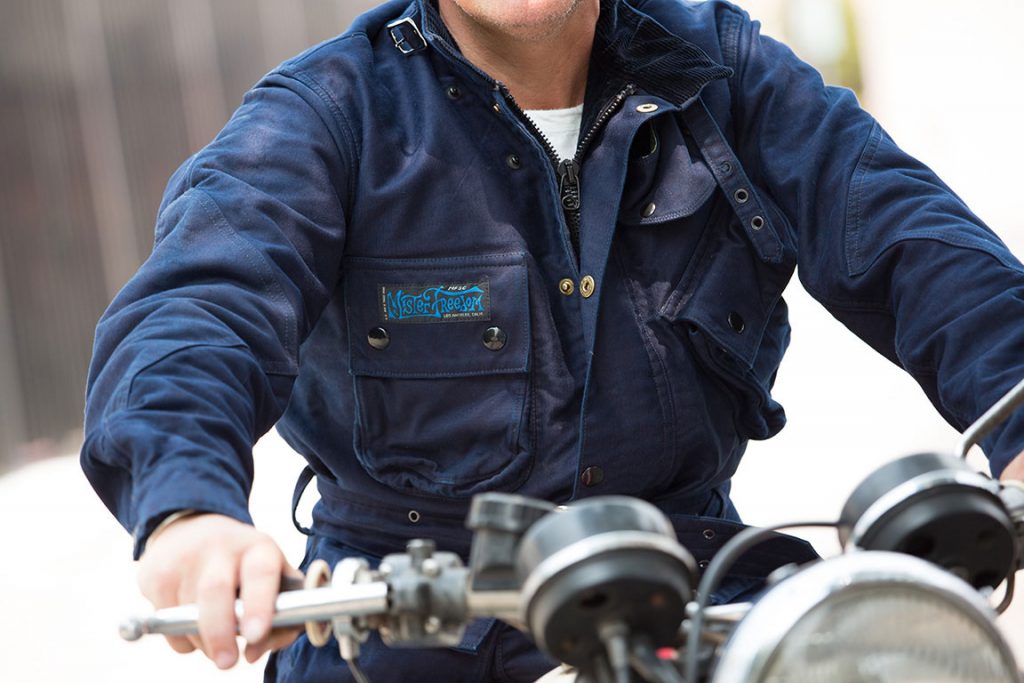 Photo Tadashi Tawarayama for Clutch Magazine Japan ©2016 
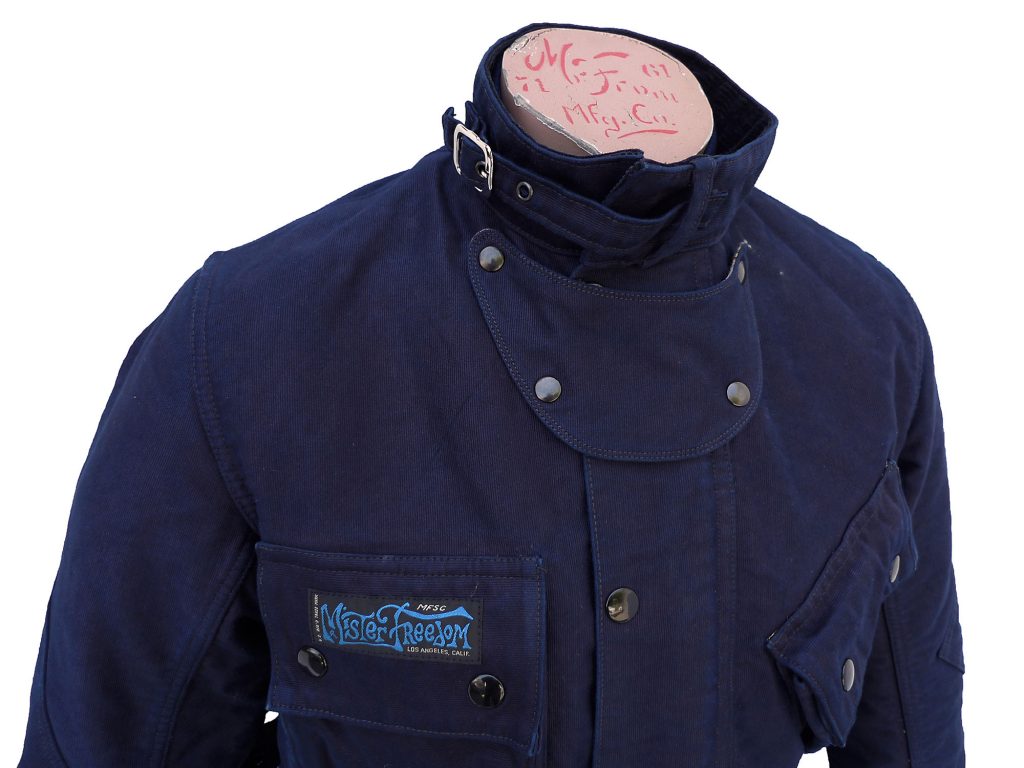
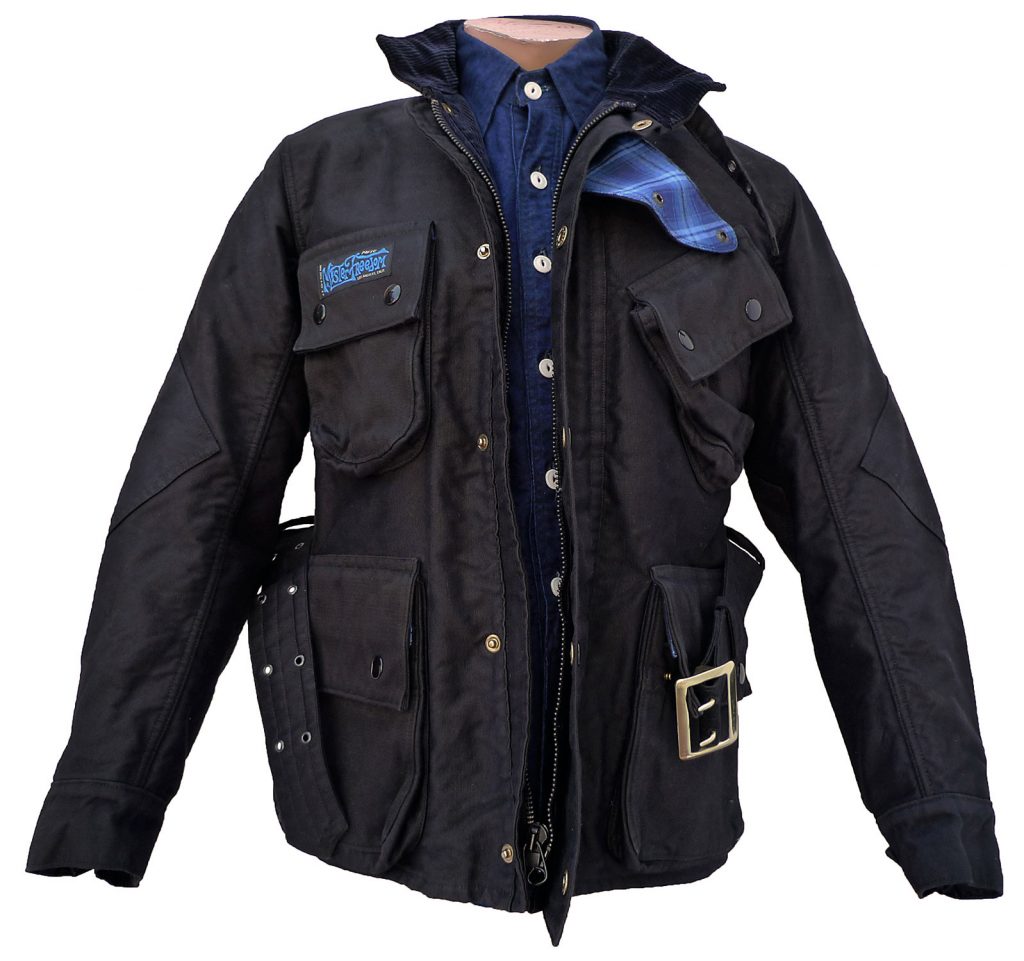
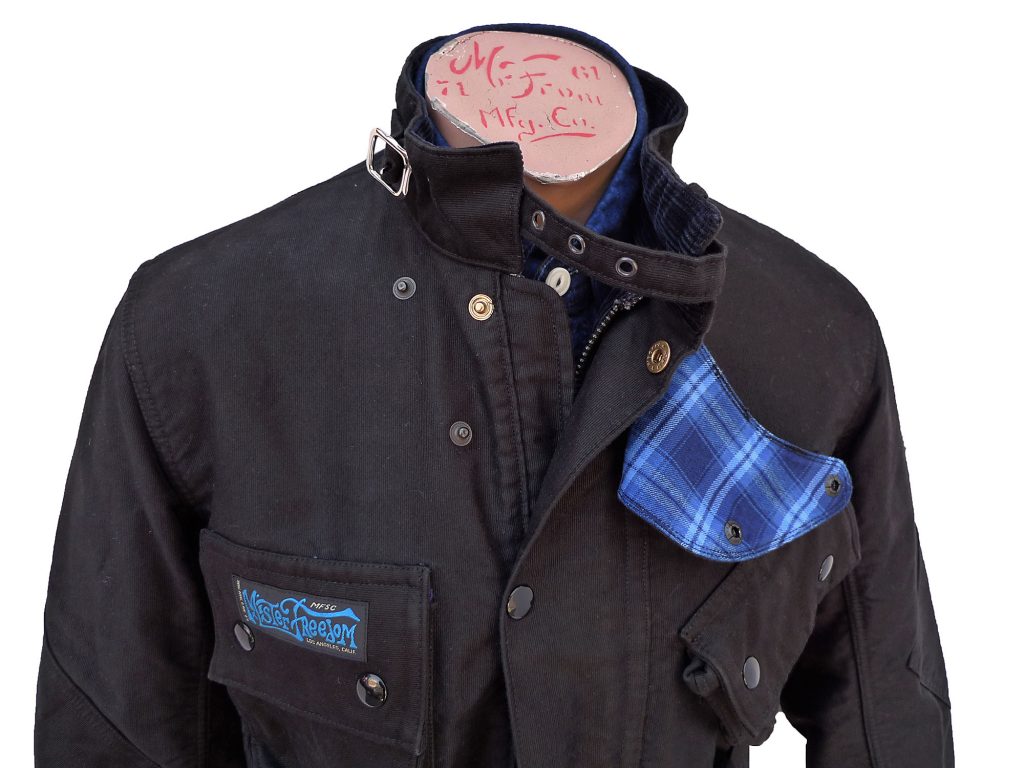
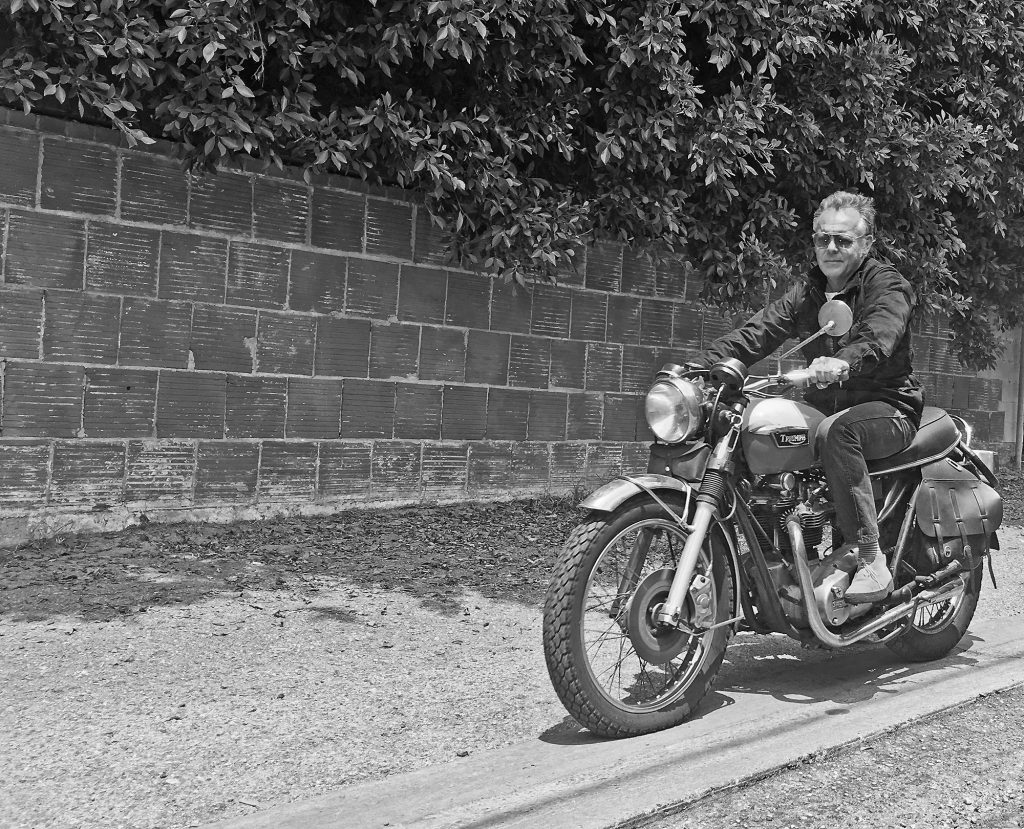
-
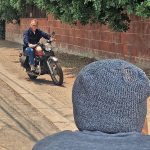
-
Tad in action!
Mister Freedom® Mulholland Jacket, Indigo and Black jungle cloth Edition
Fall 2016 mfsc Anniversary Collection
Made in Japan
We’re about to cross the finish line for our Fall 2016 10th Anniversary collection, so we figured we’d do that with a checkered flag and on two wheels . Back in 2009, we released a British-style riding jacket, part of a “Speed Safe Clothing For Modern Riders” story.
This will be the 2016 limited edition of that little number…
Today a familiar silhouette in fashionable menswear, the origins of the classic “A7 jacket” arch back to the mid 1930’s. The jacket’s design, with its instantly-recognizable pattern featuring that single slanted chest pocket, emerged out of the UK. Originally developed by J. Barbour and Sons for the military, the jacket would later be associated with typical British motorcycle oil cloth riding gear. Similar styles from competing motor-cycling apparel brands were made available, such as wax cloth pioneer Belstaff‘s versions.
By the 1960’s recreational motorcyclists around the world, and select professional racers alike, had adopted the ‘European’ style riding gear fashion.
In 1964, the US Olympic Team would give the British motorcycle jacket its Lettres of Coolness during the International Six Day Trials (ISDT), with a little push from one of the official members, rider number 278.
Check out this nice photo essay.
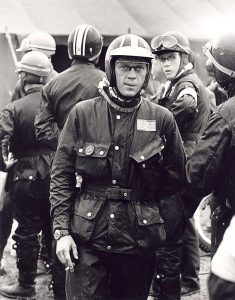 US Team ISDT 1964 (Photo © Francois Gragnon) We got the name of our humble interpretation of that classic from one of Los Angeles’ famous highway, a scenic stretch of asphalt turned playground for Californian motorcycle riders, automotive speedsters and local midnight cruisers.
The Mister Freedom® Mulholland Master‘s pattern borrows heavily from vintage UK apparel, but also from vintage US military gear such as 1940’s paratrooper outfits and BU. Aero US Navy flight jackets. It combines old school European moto style with US mil-specs fabric and hardware, keeping the 1960’s vibe while giving it a contemporary fit.
Our Mulholland Master is a versatile coat. Although not water-repellent, unless properly treated with some kind of water-proofing wax (a commitment and a real endeavor if you plan on DIY…), the jacket is quite suitable for diverse outdoor activities, spanning from sunny motorcycle rides to stylish city strolls.
The shell fabric of our Mulholland Master is a 14 Oz. “Jungle Cloth”, 100% cotton grosgrain, vintage US mil-specs, milled in Japan.
Two color options are available for this Anniversary edition, a jet black version, and an indigo-dyed version. The latter is the same fabric featured on the recently-released “Indigo Blouson de Quart”.
The body lining consists of a 100% cotton wide-wale corduroy, dark navy blue color. Each color option features its own matching tartan, a New Old Stock (NOS) woven cotton plaid, noticeable from the pockets/arms/throat-latch lining.
At about 5 pounds per beast, the Mulholland Master is a heavy jacket. It has proved to be an extremely complicated garment to manufacture, and has been dubbed by Japanese factories as the most challenging MF®-designed garment to cut and sew, out of 10 years of mfsc daring collaborations. For the expert Toyo Enterprises factory craftsmen, already well-acquainted with the demanding Buzz Rickson’s and Sugar Cane catalog, the “Mulholland Master” has become a bête noire…
For this reason, and other COO (Country Of Origin) challenging considerations, and in order to keep our Mister Freedom® garments in a certain price bracket so as to not instigate an upheaval on fashion forums, with savvy members well-versed in cost-of-goods and oh-so competent in setting responsible modern standards on garment manufacturing, our Mulholland Master pattern is likely to never be issued again.
The Mulholland Master is designed in California by MISTER FREEDOM® and produced in Japan by SUGAR CANE Co.
SPECS:
FABRIC:
Option A
Shell: Tight weave 14 Oz. “Jungle Cloth”, 100% cotton grosgrain, period mil-specs, dark indigo blue color, milled and indigo-dyed in small batches in Japan.
Lining: NOS cotton woven plaid, blue dominant tartan.
Option B
Shell: Tight weave 14 Oz. “Jungle Cloth”, 100% cotton grosgrain, period mil-specs, jet black color, milled in Japan.
Lining: NOS cotton woven plaid, blue dominant tartan.
DETAILS:
* Freely inspired by vintage classic British motorcycling apparel, 1940’s US Paratrooper jackets and other vintage military coats.
* Four front snap flap rainproof pockets and one back snap flap pocket, for maps/tools/documents. Top right pocket secured by concealed “Conmatic” zipper. Pockets lined with NOS plaid fabric.
* Inside chest pocket.
* Belted, featuring a solid US-made brass police garrison buckle. For the rowdy type, that removable belt can turn into a quaint flail, should you survive a close encounter with a texting ‘n driving genius in a SUV…
* Italian “Fiocchi” brass snaps, original manufacturer of Italian military snaps, along with their cousin counterpart Company DEWEY.
* 1950’s-type US mil-specs oxidized black metal TALON zipper front closure.
* Wind flap secured by snaps.
* Removable throat latch (make sure it is securely snapped in place or store in pocket before hitting the highway!)
* Stand collar with adjustable buckle strap, corduroy-lined.
* Diamond elbow patches, M-421A BU. Aero US Navy jacket-style.
* Adjustable gusset wrist snap closures.
* Tonal stitching, cotton-wrapped poly thread.
* Made in Japan.
SIZING/FIT:
We had these jackets professionally rinsed. NOT distressed, but gently rinsed without detergent, and tumble-dried. So, no shrinkage guessing, the Mulholland Master is pre-shrunk, and true to size.
I wear a comfortable 38 in this coat, with room for a thick shirt or wool sweater underneath. In general, go with your usual size in mfsc jackets.
We have taken the measurements to the best of our abilities. Refer to our sizing chart and remember that measurements are from the outside of the fabric.
CHART
CARE:
Please DO NOT attempt to wash this jacket in a home washing machine! You risk ruining both machine and jacket. The Mulholland Master weights a ton when wet, the jungle cloth fabric will get marbling marks etc…
Activities and frequency of wear will obviously dictate when cleaning is needed. Please use common sense with spot cleaning, or take the jacket to a professional eco-friendly cleaner. This jacket can also be hand-washed in a tub filled with cold water, for the adventurous type. Use eco-friendly detergent for delicate colors. Hang to dry.
IMPORTANT: Treat your zipper as you would a vintage one, rub wax to lubricate at times, and use common sense rather that brute force to zip and unzip, making sure tabs line-up when zipping.
Available rinsed/pre-shrunk.
Sizes
36 Small
38 Medium
40 Large
42 X-Large
44 XX-Large
Retail
A) Indigo: $999.95
B) Jet Black: $899.95
Soon available from www.misterfreedom.com, and our Los Angeles brick & mortar store.
Email sales@misterfreedom.com or call 323-653-2014 with any questions unanswered above.
Thank you for your support.
Christophe Loiron
Mister Freedom®
©2016
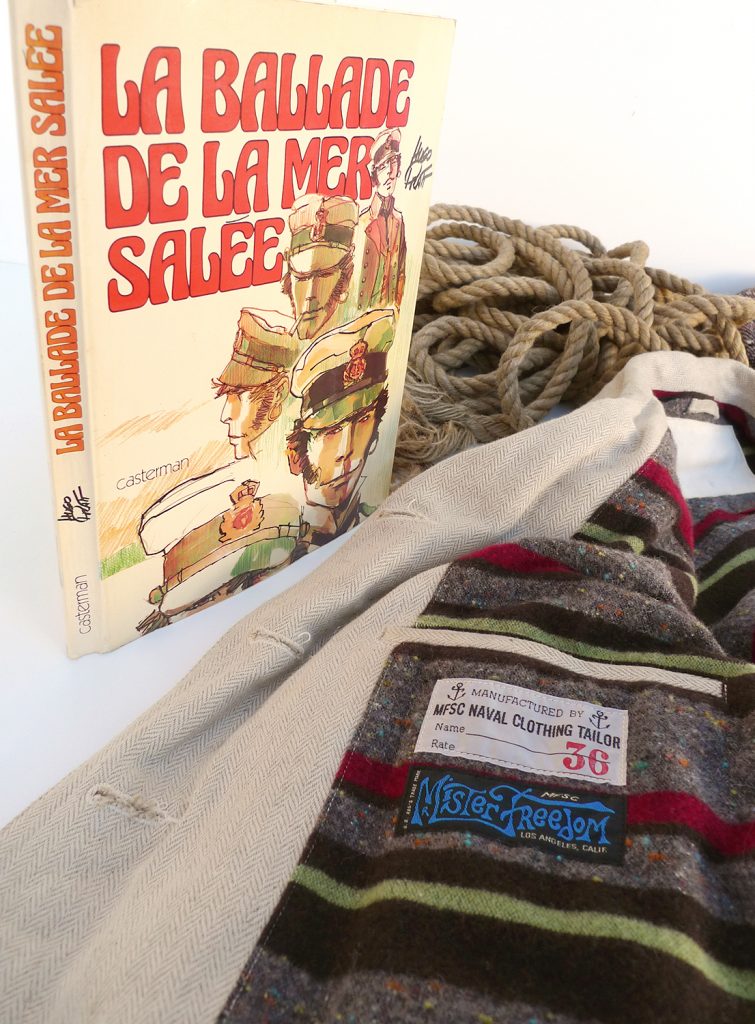
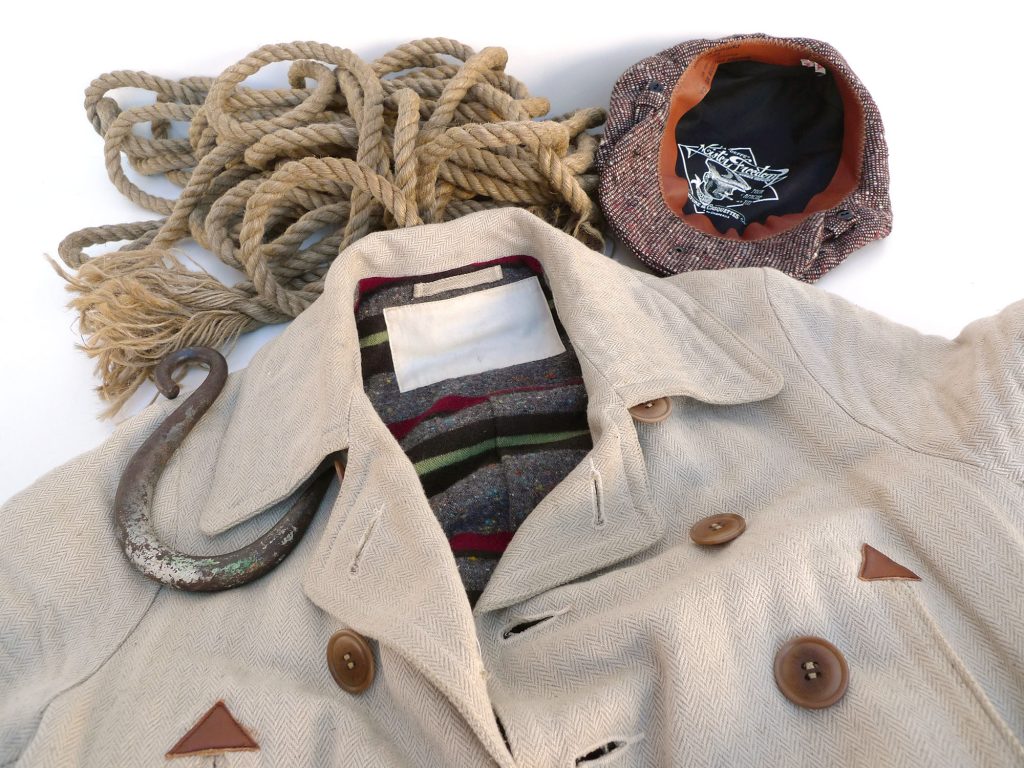
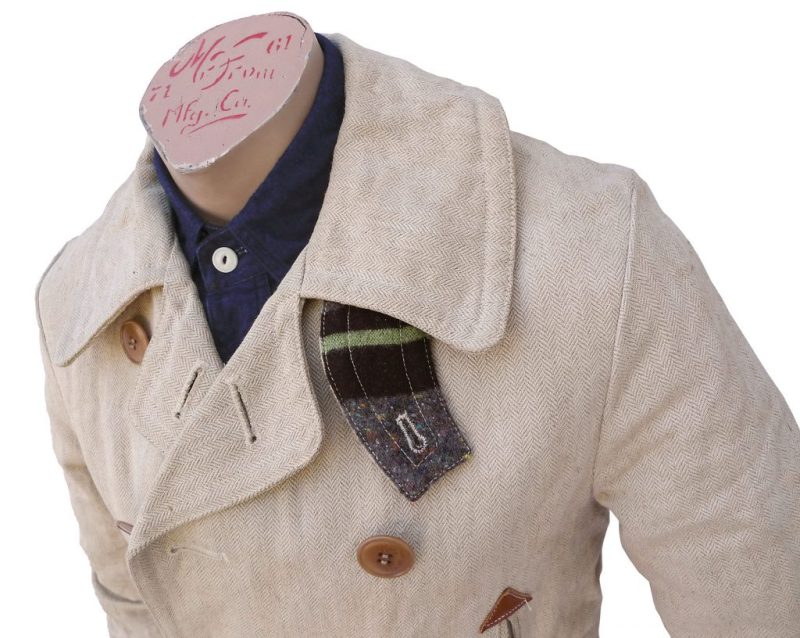
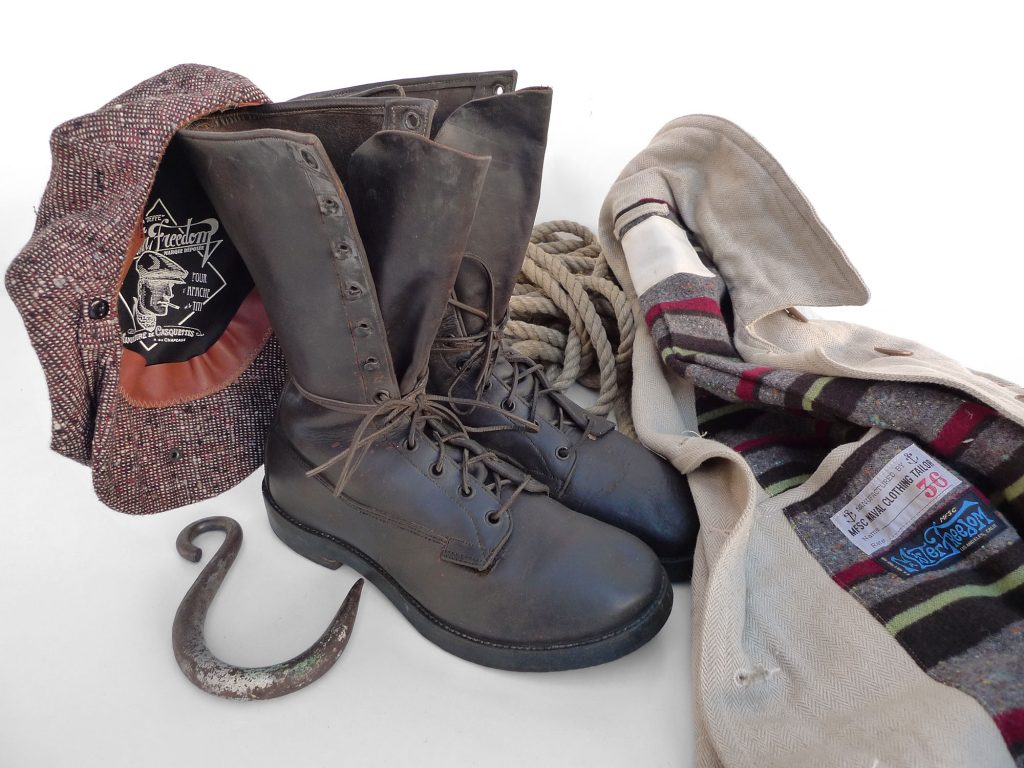
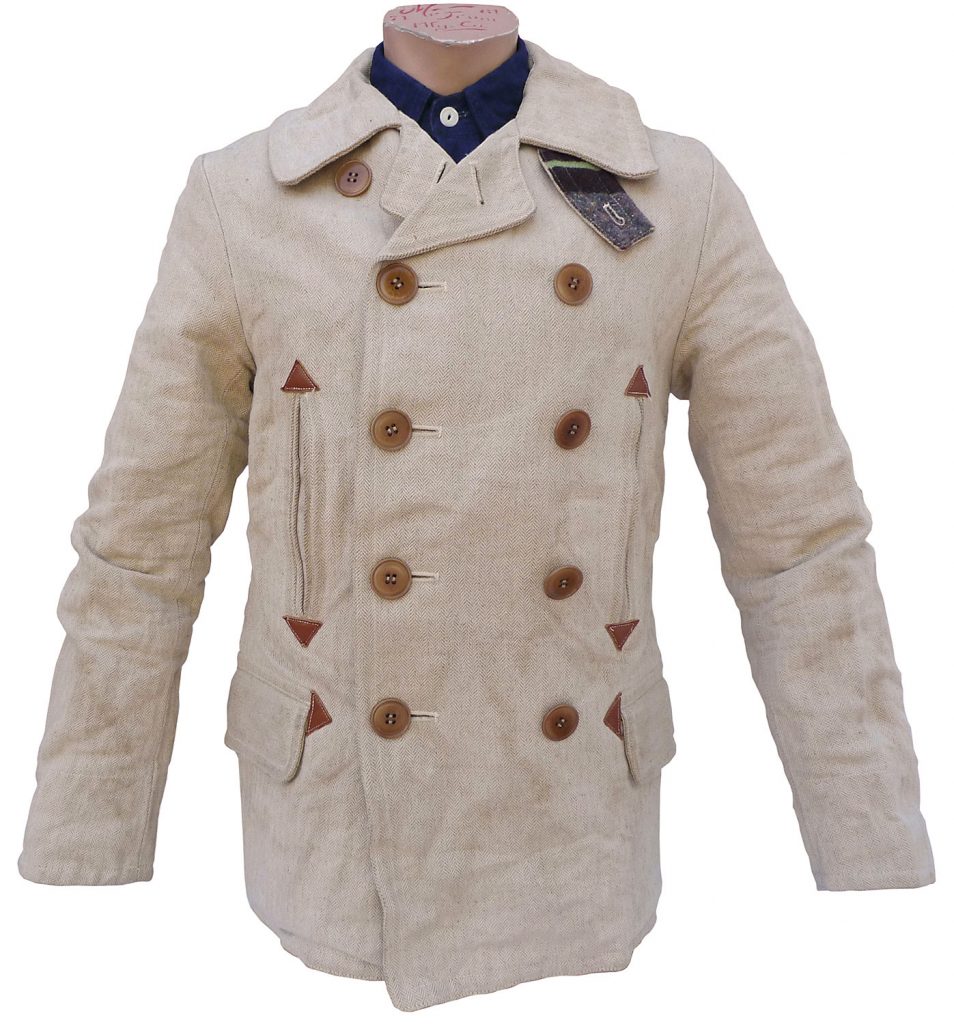
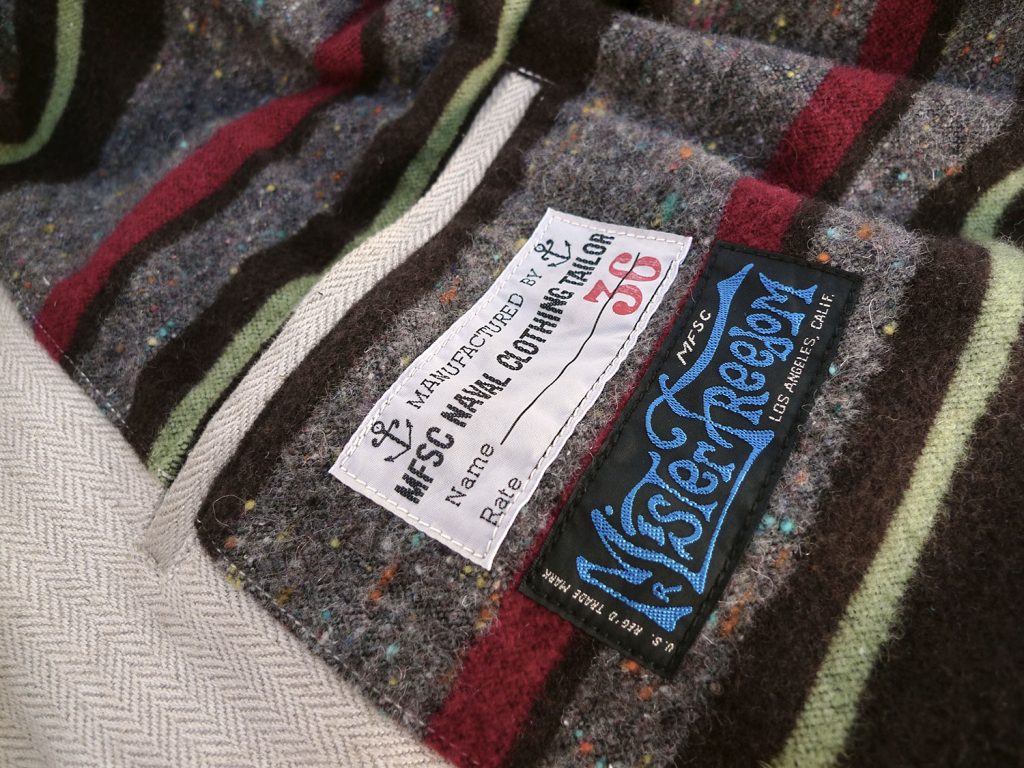
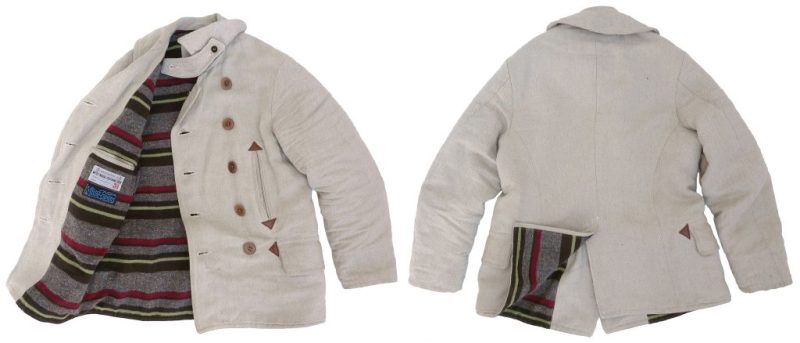
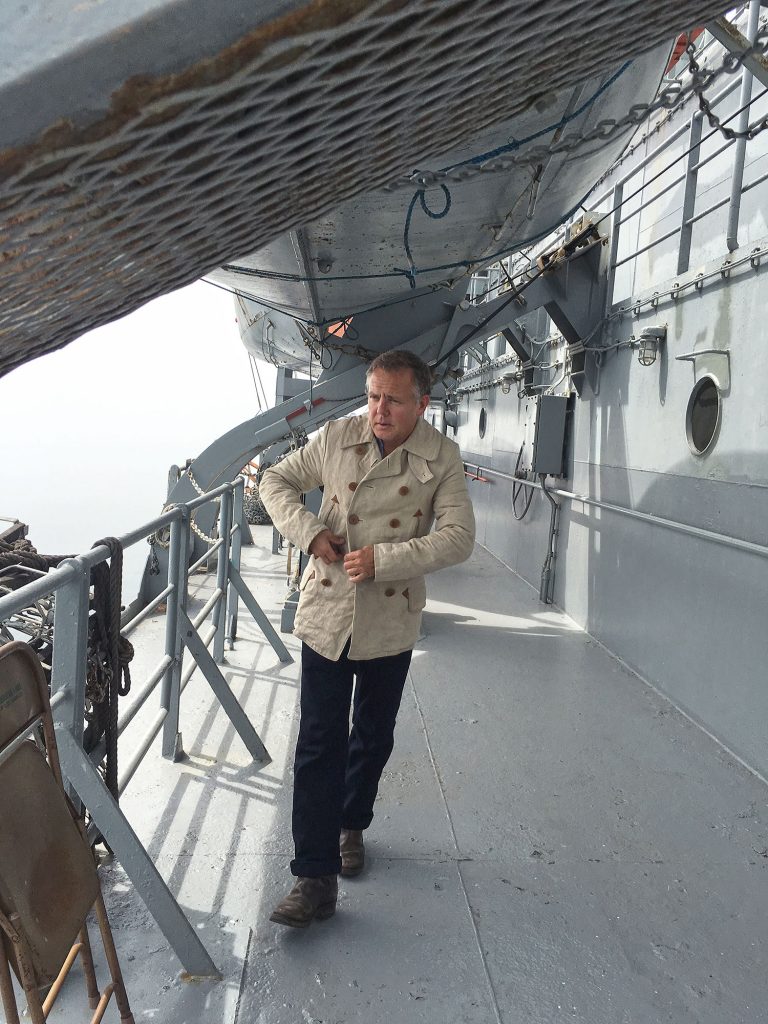 It was about 95°F in San Pedro that day… The Waterfront Coat, HBT cotton Linen, Troy Blanket lining.
Fall 2016 mfsc Anniversary Collection
Made in Japan
The final drop in the ocean of goodies issued for Fall 2016 will be the Waterfront Coat.
Not yet a wrap for our mfsc Ten Year Anniversary adventures, merely the last page of its nautical chapter. After two deck jackets, a couple of naval chinos, a blue shirt, and a souvenir jacket, all we needed was …one peacoat!
Anchors aweigh!
The familiar silhouette of the Waterfront Coat is another homage to the early pattern of the classic USN P-Jacket, a.k.a. peacoat.
Sometime in Spring 2008, we released a denim version of that iconic manly garment, part of the “MFSC Naval Clothing Tailor” concept, our first full-fledge collection in collaboration with Sugar Cane Co. If a 10-button peacoat made from selvedge denim didn’t necessarily sound like a good idea back then either, it kinda caught on. Some of our jackets even made it to unlikely retail doors, finding their way to Sir Paul Smith’s store shelves in swinging London, or on J.Crew’s catalog, eventually ending-up on sale partly because, you know, raw denim in 2008 was not exactly the most convincing selling point in menswear…
In case you missed it and enjoy a bit of Costume History at times, a previous blog post, concocted while introducing the MF® indigo twill Caban Peacoat, quickly taps into the history of peacoats, a garment adopted by Navies around the World for over a Century.
For Fall 2016, our design approach was to ‘demilitarize’ the famed War Department-issued blue jacket, twisting a USN regulation uniform into a civvy garment, morphing the peacoat into a mackinaw coat.
The shell fabric we chose is an old mfsc favorite, a blend of linen and cotton woven in a heavily-textured herringbone twill pattern, milled for us in Japan. Inspired by the fabric of late 1800’s/early 1900’s Sapeurs Pompiers (french firemen) work uniforms (bourgerons), we originally issued a handsome ‘gunpowder black’ version of it, as featured on the Faro sack coat, waistcoat, and britches of our 2012 Men of the Frontier Collection.
Recognizing at the time how attractive this HBT fabric looked in its un-dyed, un-bleached state, our design department kept it on the back burner, as a contender for a future project. So here it is, at last, in all its natural beauty!
For the lining, we went with an American vintage classic. Canteen blankets have been a bit overplayed in ‘Heritage Fashion’ in recent years, cut and sewn into all kinds of improbable garments and accessories, so we opted to keep it fully concealed on the inside.
Troy Blankets come in several colorways, our 2010 “N-1H Tr0y” featured one of them, and we chose a stripe pattern of warm tones that was new to us this time, the flecked brown-dominant version.
Replacing the classic foul anchor black buttons with natural brown corrozo wood buttons contributed to the ‘maritime to workwear’ make-over.
If the resulting jacket looks quite different from previous MF® iterations of the classic USN peacoat, it still fits our eclectic vintage aesthetics, this time Corto Maltese meets Terry Malloy and his docker comrades.
-
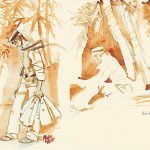
-
Corto Maltese by Hugo Pratt (1981) Courtesy of Cong SA
-
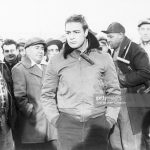
-
Terry Malloy and the waterfont crew (1954) Courtesy of Getty Images
Photo credits:
* Corto Maltese watercolor courtesy of Cong SA. Official website here.
* On set of “On The Waterfront” (1954), courtesy of Getty Images.
The “Waterfront Coat” is designed in California by Mister Freedom®, and manufactured in Japan by Sugar Cane Co.
SPECS:
PATTERN:
An original MFSC pattern, freely inspired by early 1910’s -1930’s USN and US Coast Guard sailor wool peacoats, and 1930’s-40’s vintage mackinaw-type outdoor coats.
FABRIC:
Shell: A fancy 80% linen and 20% cotton blend fabric, HBT pattern, selvedge, milled in Japan.
Lining: Soft-hand “Troy Blanket” wool blend fabric, 60% re-used wool, 28% cotton, 12% rayon). Brown dominant stripe. Woven in Japan.
NOTE: The combination and specifics of these two fabrics make the Waterfront Coat quite unfit for foul weather and extreme cold temperatures, but quite appropriate for moderately chilly days, and in-between seasons under temperate climates.
DETAILS:
* Early USN peacoat pattern.
* Canteen-type “Troy Blanket” wool blend stripe lining, brown dominant.
* 10-button front closure.
* Brown corrozo wood buttons.
* Four outside pockets, two ‘hand warmer’ slash pockets and two flap closure pockets. All lined with golden brown cotton-wool blend corduroy.
* Inside chest pocket and traditional ‘cigarette’ pocket.
* Leather arrowhead reinforcement on pocket edges.
* Fabric selvedge conspicuously displayed inside pockets and on back vent.
* Removable chin strap (displaying either fabric if left dangling, or concealed if buttoned under the collar.)
* Traditional Zig-Zag pattern under-collar reinforcement stitching.
* Double labeling, original MF® and mfsc woven labels.
* 100% cotton stitching, tonal.
* Made in Japan.
SIZING/FIT:
The Waterfront Coat comes raw/unwashed/loomstate.
Although this garment can be worn as-is (raw), for a clean, pressed look, the pattern was adjusted to match a specific silhouette after an initial cold soak/hang dry process. Aside from fabric shrinkage, the HBT linen-cotton material takes on a ‘new life’ after this process. Linen fibers expand, the high-count stitching causes ‘roping’ and subtle twisting, the lining pulls the seams up a bit… and the garment looks about 50 years older, without the use of obnoxious chemical ‘vintage washes’ dear to our industry.
We suggest soaking the garment in cold water for about 3omn, occasional hand agitation, spin dry and hang dry. Please note that unless you live in the Atacama Desert, the Waterfront Coat might take about three days to fully dry. We do not recommend using a heat dryer. We do not recommend boiling this garment either, as the leather trims and lining will probably get ruined.
Please refer to the sizing chart to see if this garment’s proportions work for you. We suggest sizing down on the Waterfront Coat. I usually wear a Medium (38) in mfsc jackets, but opted for a Small (36). After the initial soak/hang dry procedure, I still had enough room to layer a mid-weight shirt and a close-fitting Cowboy denim jacket.
Do take in consideration that the Troy Blanket lining adds a bit of ‘puffiness’ compared to a thin cotton twill lining.
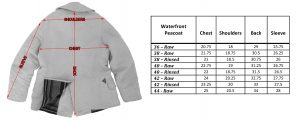
CARE:
After the initial cold soak, we recommend taking the Waterfront Coat to your local eco-friendly dry cleaner for cleaning. Do not use a home washing machine to launder, as the coat is quite heavy and stiff when wet. Spot cleaning can be performed by using a damp cloth and common sense.
Available raw/unwashed.
Sizes
36 Small
38 Medium
40 Large
42 X-Large
44 XX-Large
Retail $799.95
Available from www.misterfreedom.com, and our Los Angeles brick & mortar store.
Email sales@misterfreedom.com or call 323-653-2014 with any questions unanswered above.
Thank you for your support.
Christophe Loiron
Mister Freedom®
©2016
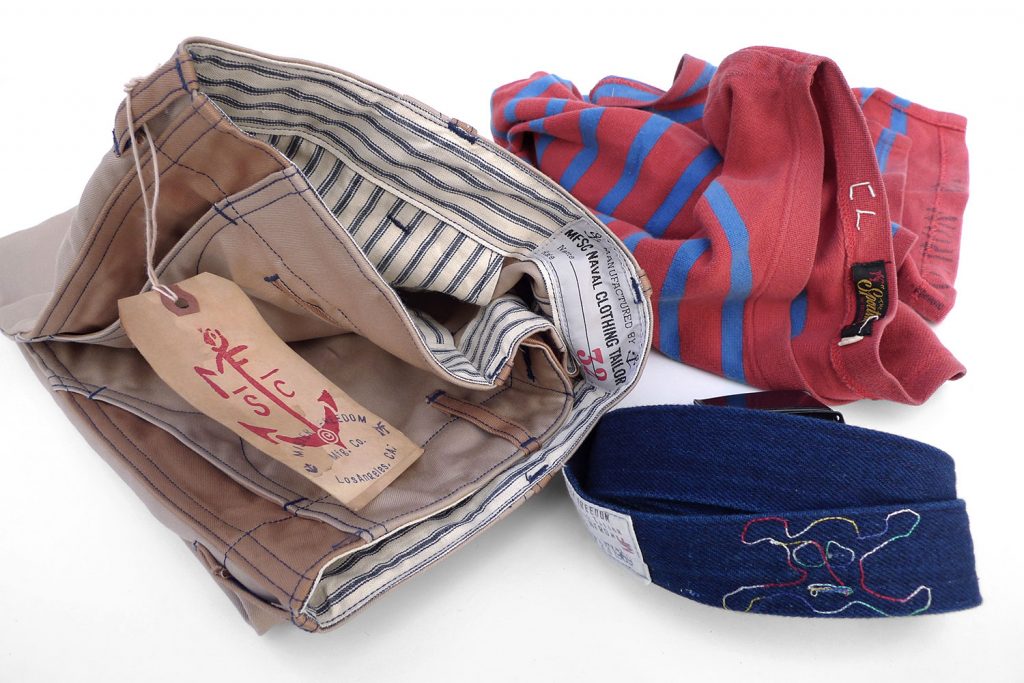
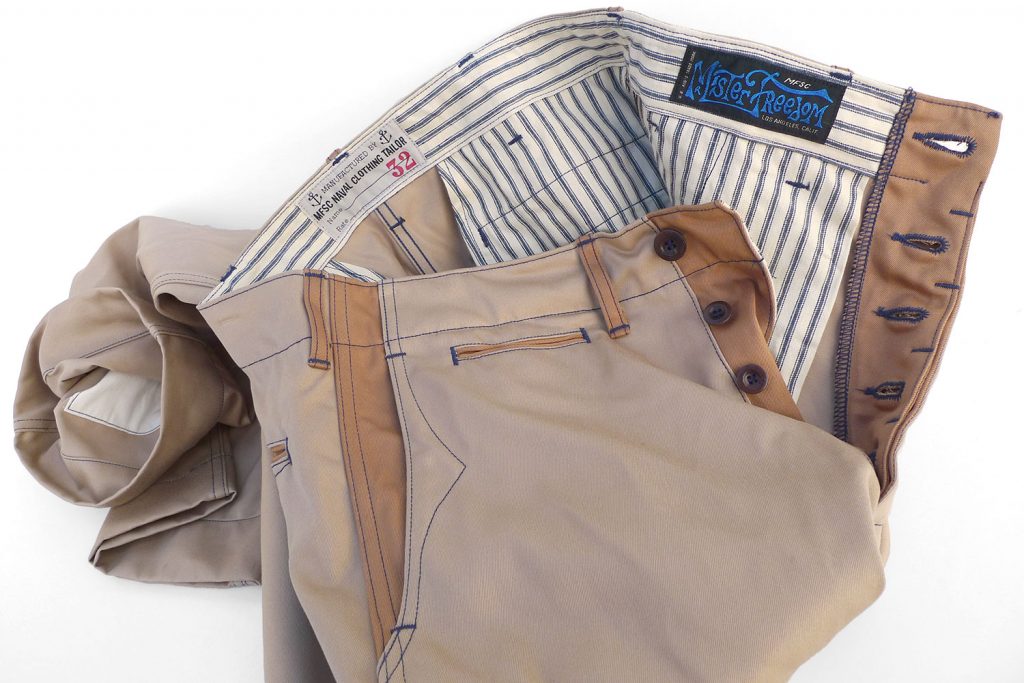
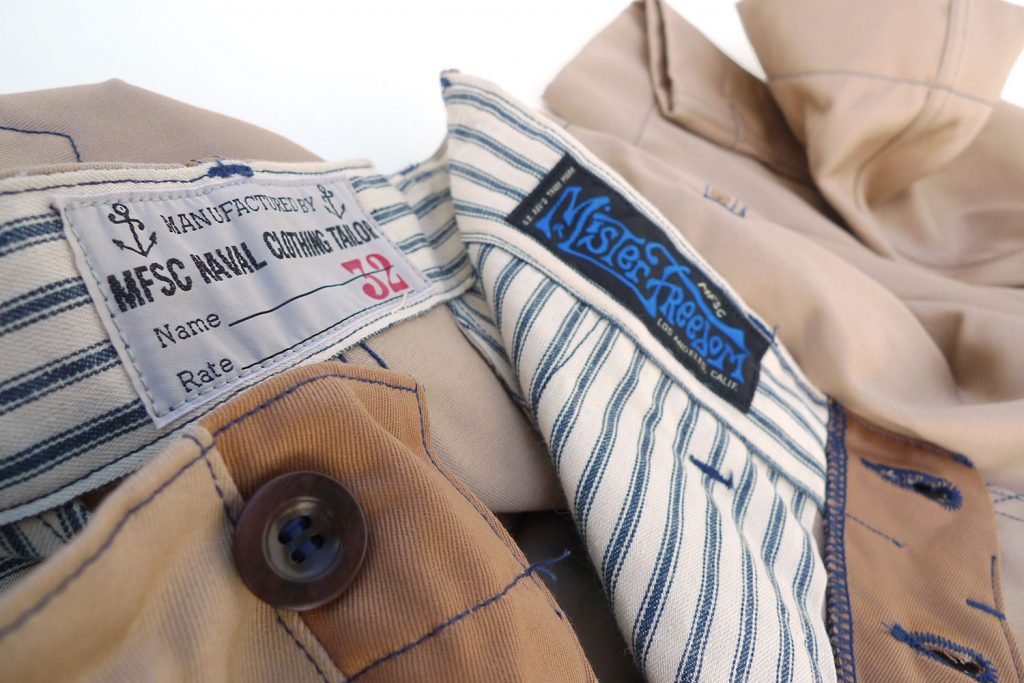
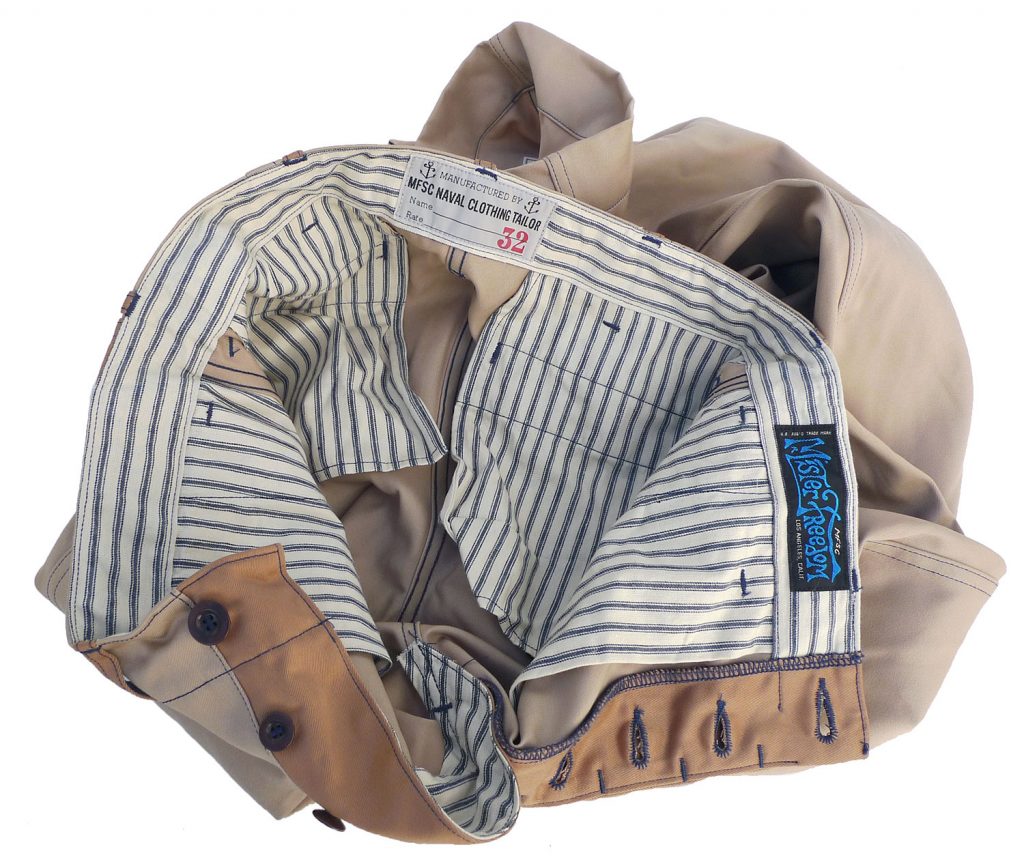
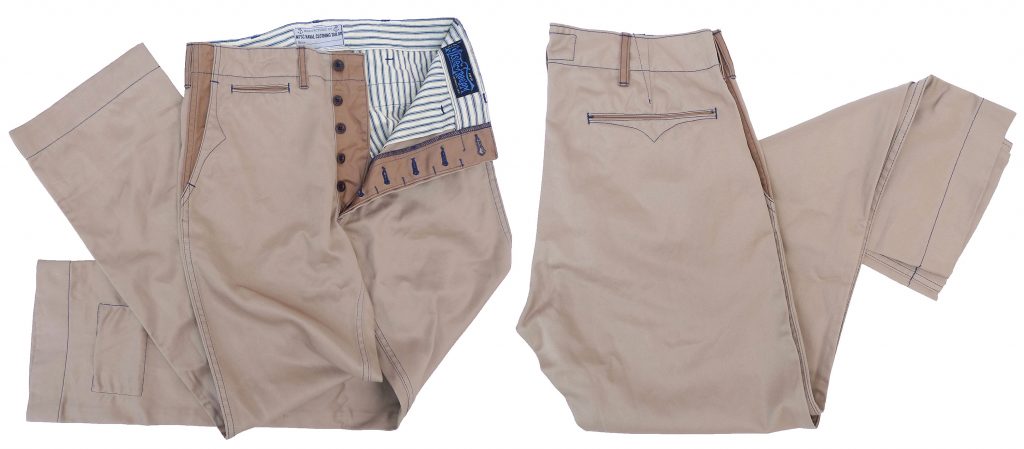

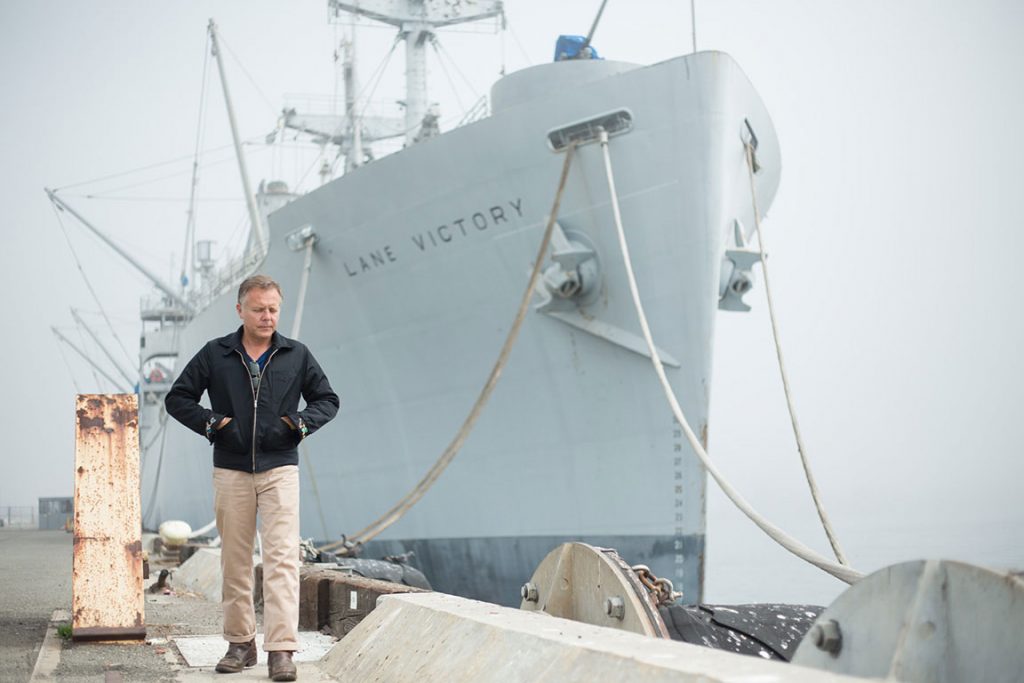 Photo courtesy Tadashi Tawarayama (Clutch Magazine Japan) Mister Freedom® Naval Chinos, Type No.266ac, mil-specs Khaki Chino Twill issue.
Fall 2016 mfsc Anniversary Collection
Made in Japan
A nod to our early collaborating days with Sugar Cane Co, specifically the “MFSC Naval Clothing Tailor” capsule collection of 2008, we are issuing a version of our original “Naval Chinos” this Fall. With a pattern inspired by 1940’s US Army chino trousers, this Ten Year Anniversary edition comes in two very distinct options, the recently-released indigo canvas version, and a version similar to the original issue, a long-awaited new khaki chino twill model. Please note that these are military-inspired chinos, a totally different pattern from our casual Sportsman chinos and dressier Continental trousers.
As we did with our 2008 original issue, we are mixing two types of cotton military chino twills, produced by our friends at Buzz Rickson’s, US Army, US Army Air Force, US Air Force, and US Navy vintage mil-specs replica experts. Both twills feature the same 8.2 Oz. weight, but contrast noticeably in color. Our original design approach in mixing them was to emanate wartime production crunch, when two different dye lots were at times cut and sewn into one production run. Vintage clothing aficionados will be familiar with such specimen, quite rare today.
Our ‘Naval Chinos’ also stand out from the contrasting navy blue stitching. With repeat wash/wear, these color contrasts will gradually fade into an attractive, unique and subtlety-nuanced blend.
One might consider our tricked-out colorful chinos ‘too weird’ to wear, but, if you’re reading this, chances are you are already dressed weird, according to the guy sitting next to you on the plane.
?✌?
The MF® “Type MFSC No.266ac” Naval Chinos, Khaki Chino Twill issue, are designed in California by Mister Freedom® and manufactured in Japan by Sugar Cane Co.
FABRIC:
Original mix of two dye-lot shades of period mil-specs khaki chino twills, 100% cotton, 8.2 Oz., milled in Japan for Buzz Rickson’s. The initial fabric sheen is due to the specific milling and finishing process, and will rapidly subside with normal wash/wear cycles.
Pocket bags and waist band are made from 100% cotton woven stripe ticking, milled in Japan.
SPECS:
* Pattern inspired by vintage 1940’s US Army chino trousers.
* Stripe ticking 100% cotton pocketing and waistband facing.
* Button fly.
* Waist closure and fly: brown corrozo wood buttons.
* Front slash pockets and back welt pockets featuring arcuate decorative stitching.
* Watch pocket.
* Double MF® woven labeling on inside waist band.
* Concealed cloth label for custom markings on lower leg, French Navy style.
* Flat-felled leg seams.
* Navy blue contrast 100% cotton stitching.
* Made in Japan, designed in USA, worn around the World.
SIZING/FIT:
The Type MFSC 266ac Naval Chinos in khaki twill come raw/unwashed/loomstate, and the fabric is pretty much sanforized.
We recommend an initial 30-40mn cold soak with occasional hand agitation, then spin dry cycle. Hang dry.
The tagged size roughly corresponds to sizing after this soaking process. I wear a comfortable Waist 32 in these chinos. No need to size up or down from your actual measured waist size.
Please note that, due to the use of 100% cotton stitching and 100% cotton pocketing, slight shrinkage, seam roping and torquing might be obtained with the use of hot water and normal washing machine wash cycle. The true intended fit and pattern of these trousers has been adjusted according to a cold water rinse and low-heat tumble dry process.
Our khaki Naval Chinos feature a vintage silhouette, mid rise, with somewhat of a classic leg, neither slim nor baggy.
Refer to chart for soaked/line dry measurements.
CHART
CARE:
These trousers should be low maintenance. We recommend a normal wash cycle with cold or warm water and eco-friendly detergent. Turning the trousers inside out will help avoid marbling. Line dry.
Available RAW (unwashed)
Waist: 28, 30, 32, 34, 36 and 38.
Retail $329.95
Soon available from www.misterfreedom.com, our Los Angeles brick & mortar store, and fine retailers around the World.
Email sales@misterfreedom.com or call 323-653-2014 with any questions unanswered above.
Thank you for your support.
Christophe Loiron
Mister Freedom®
©2016
|










































































































